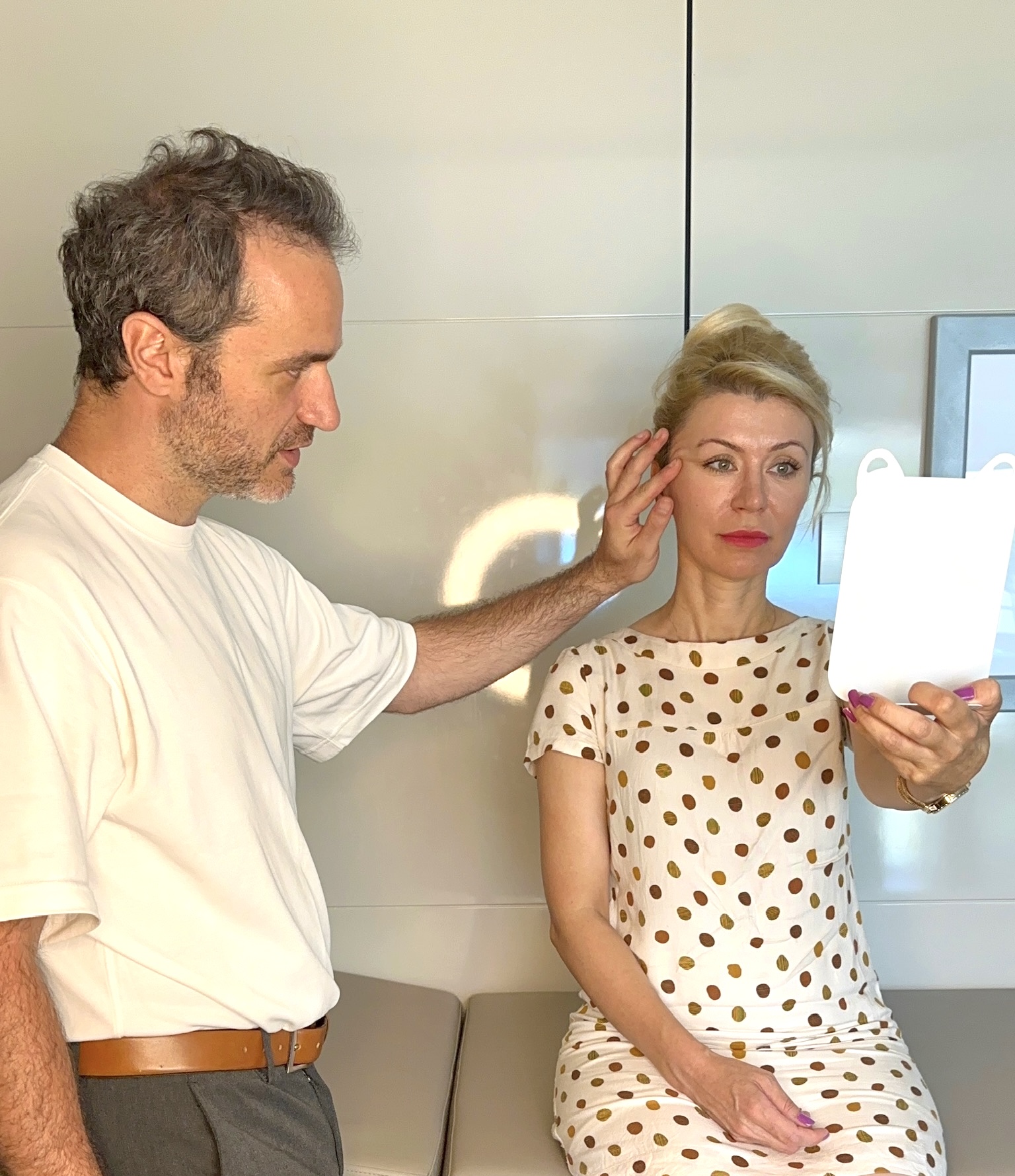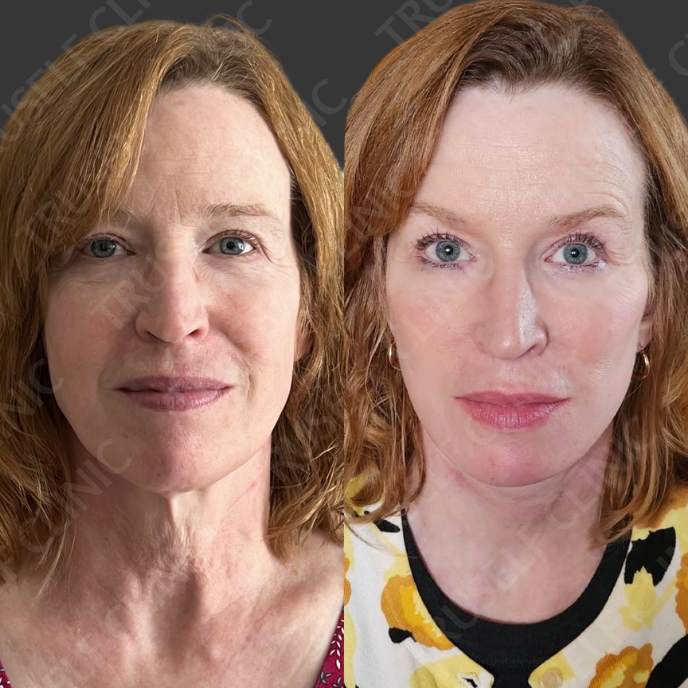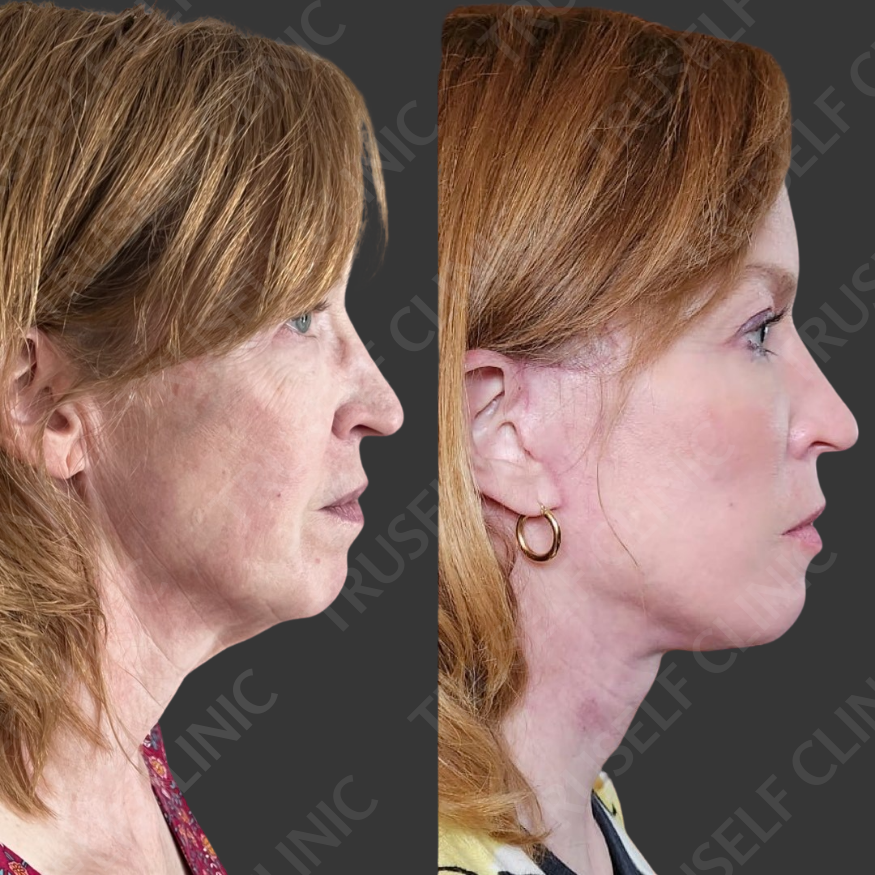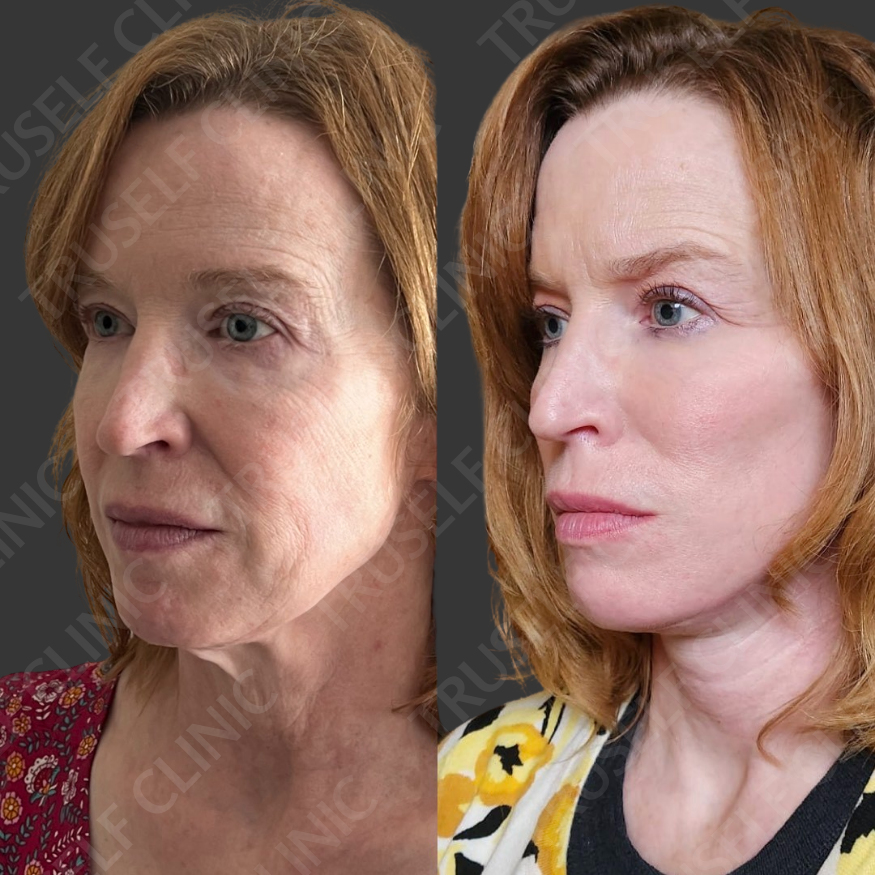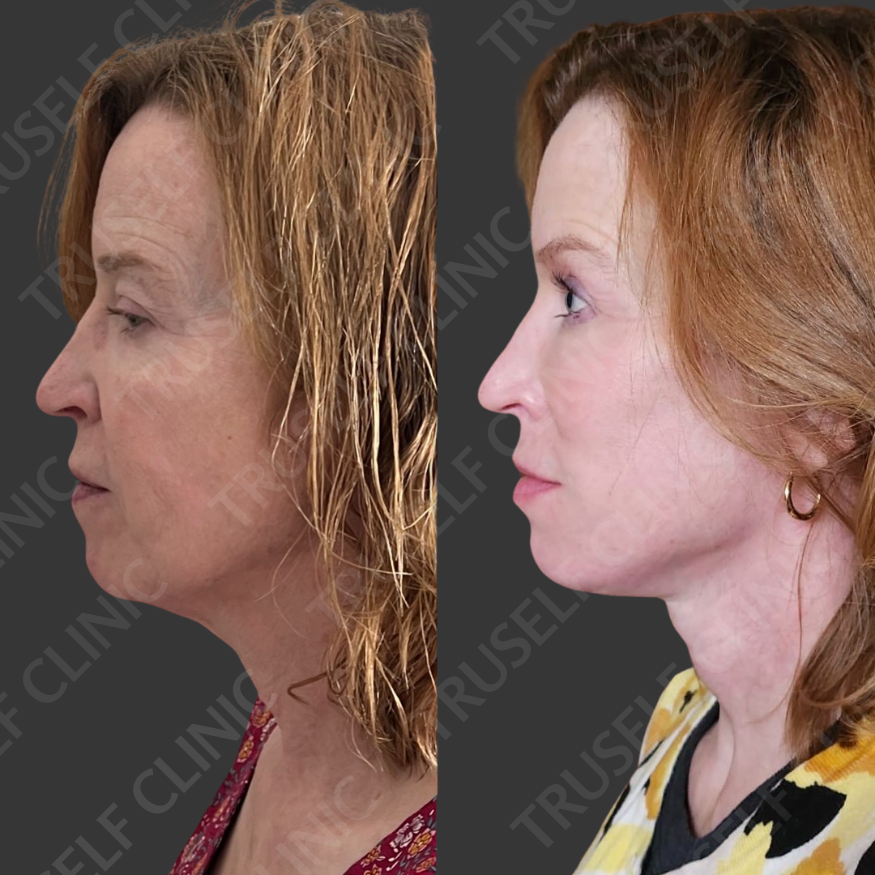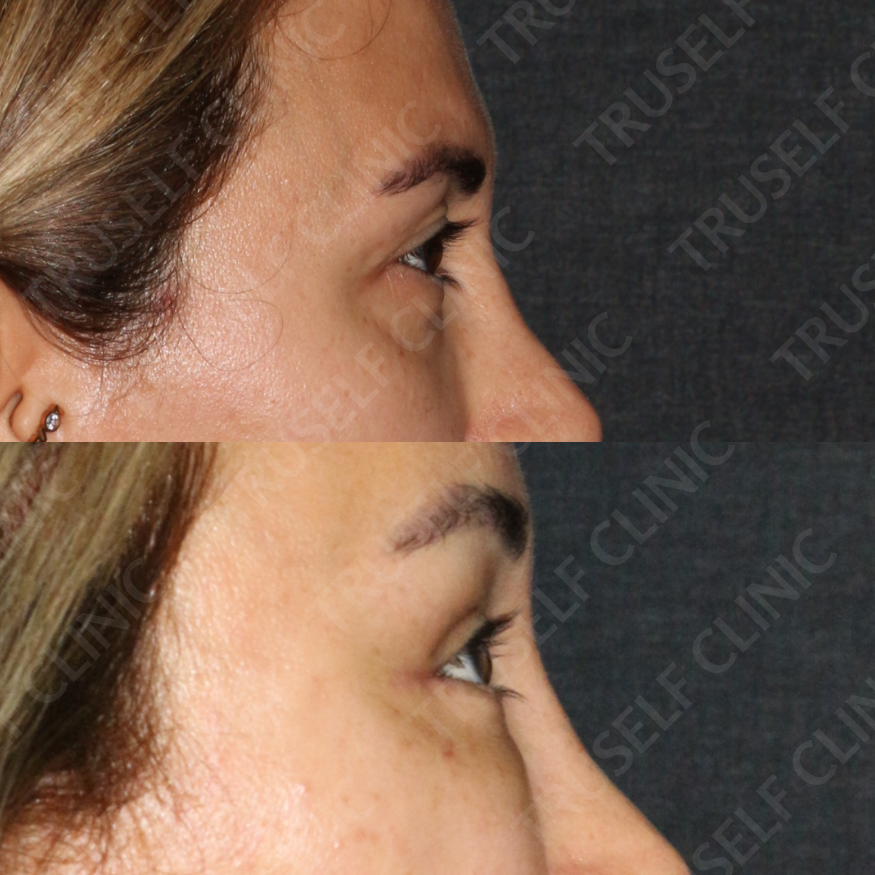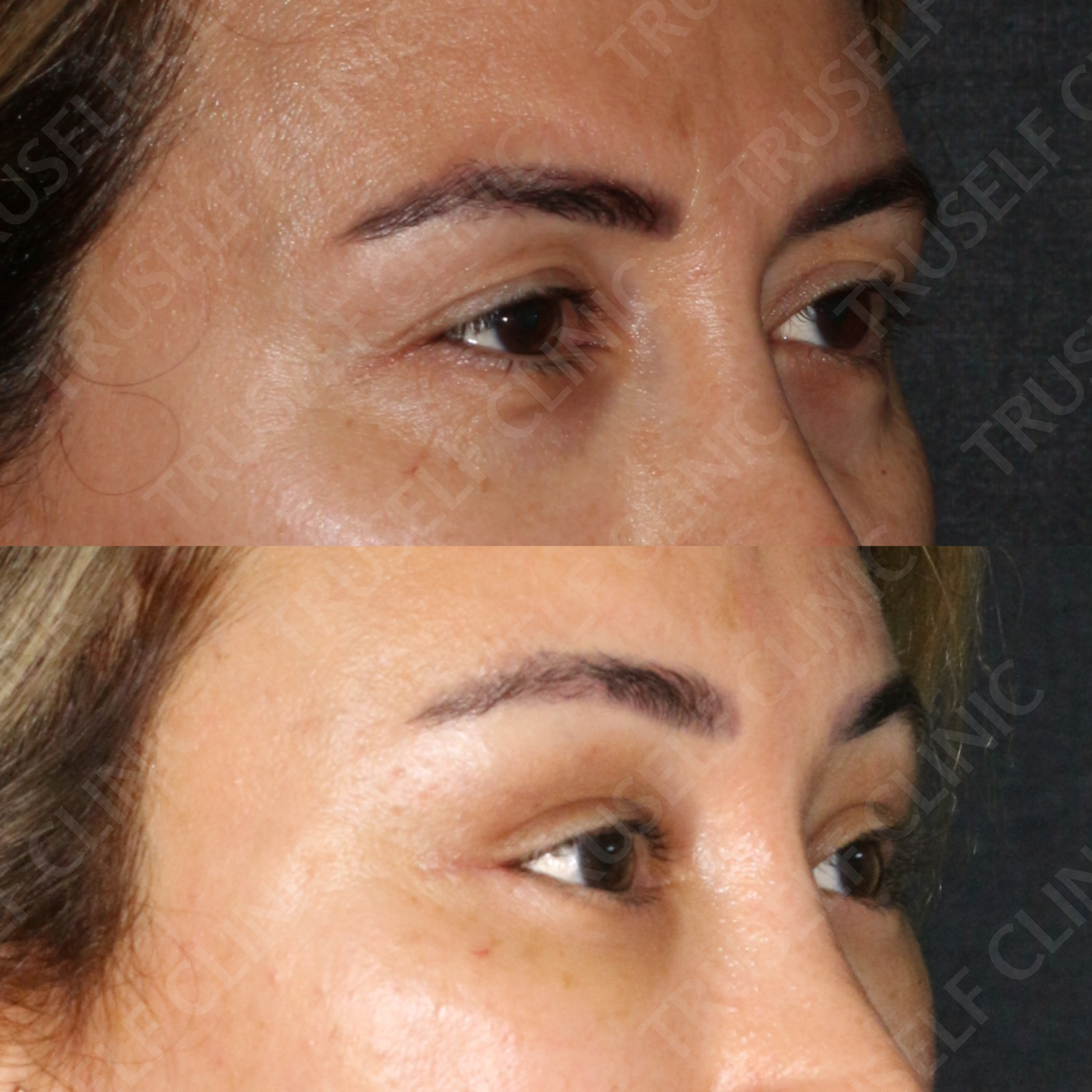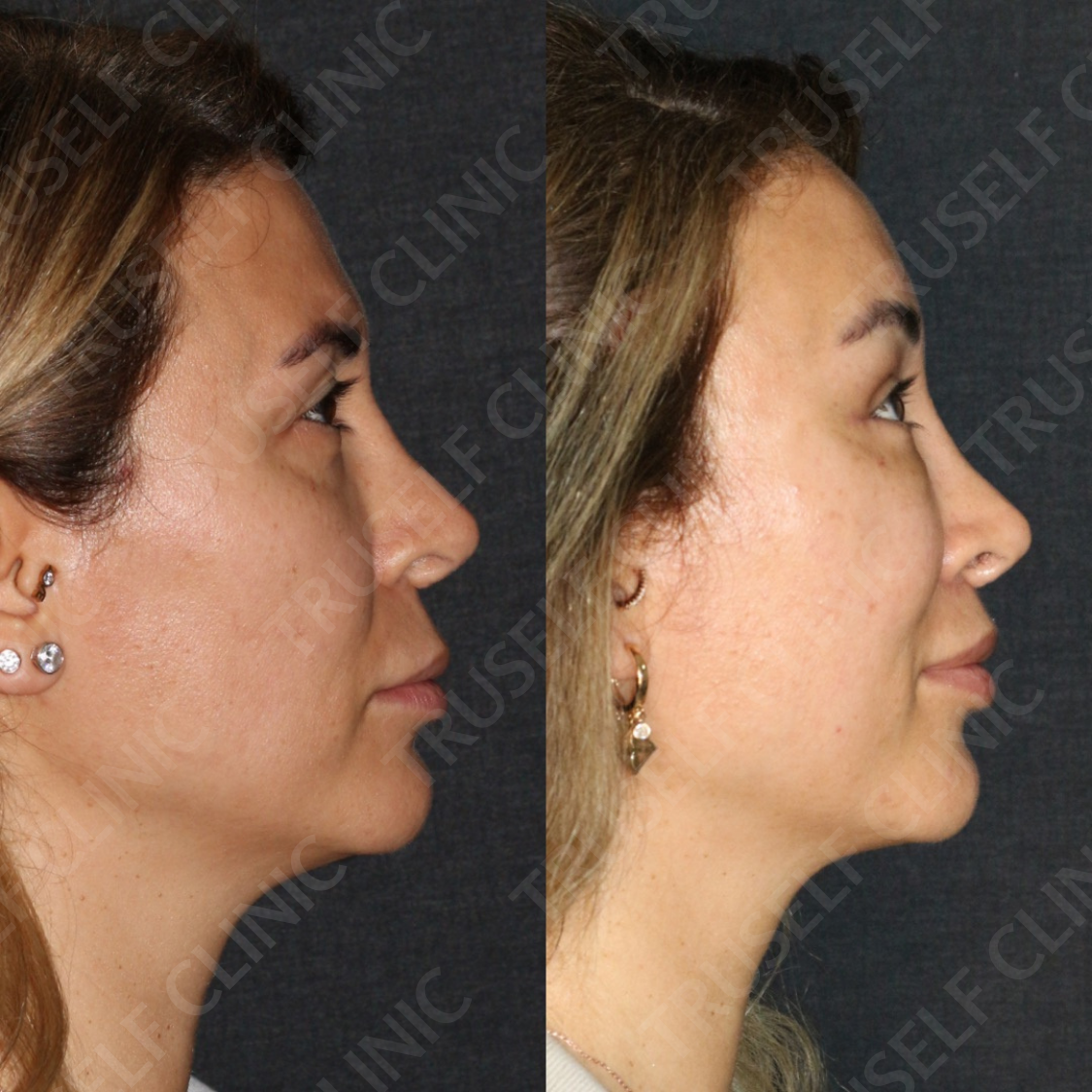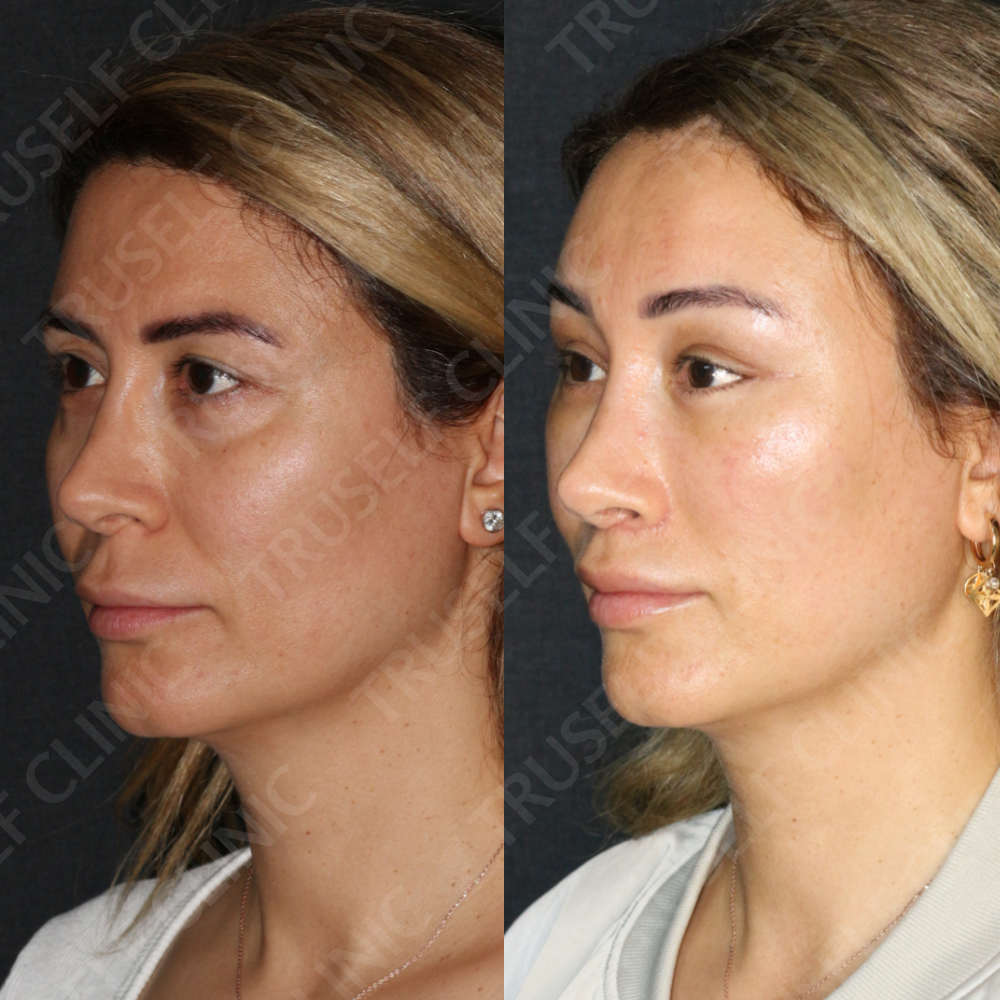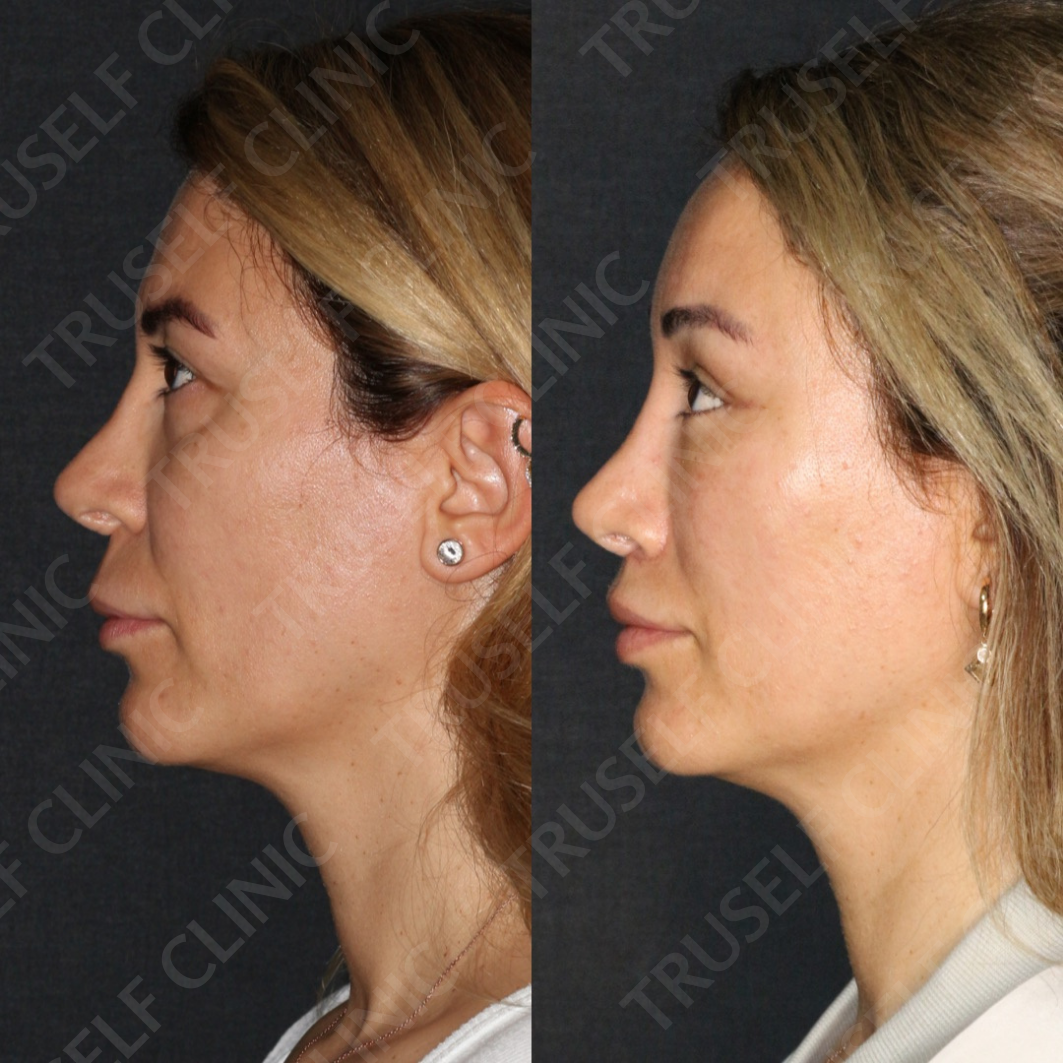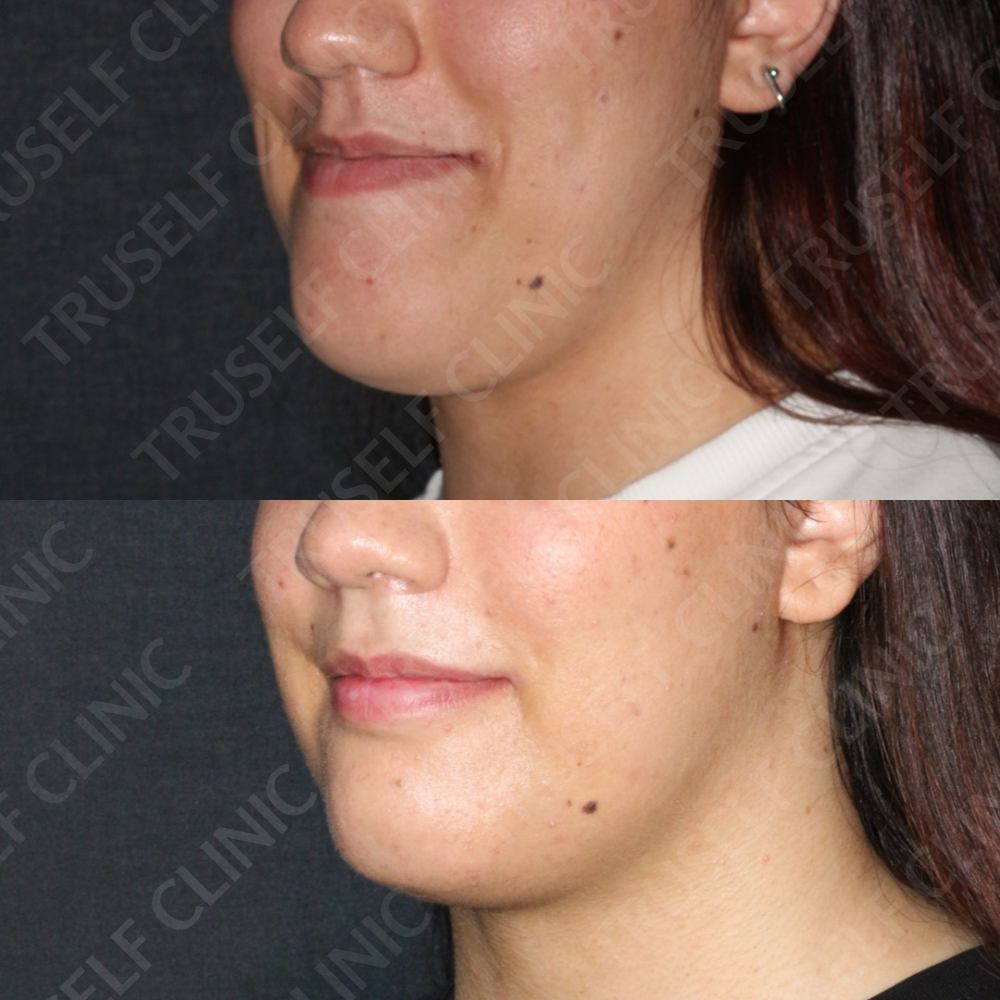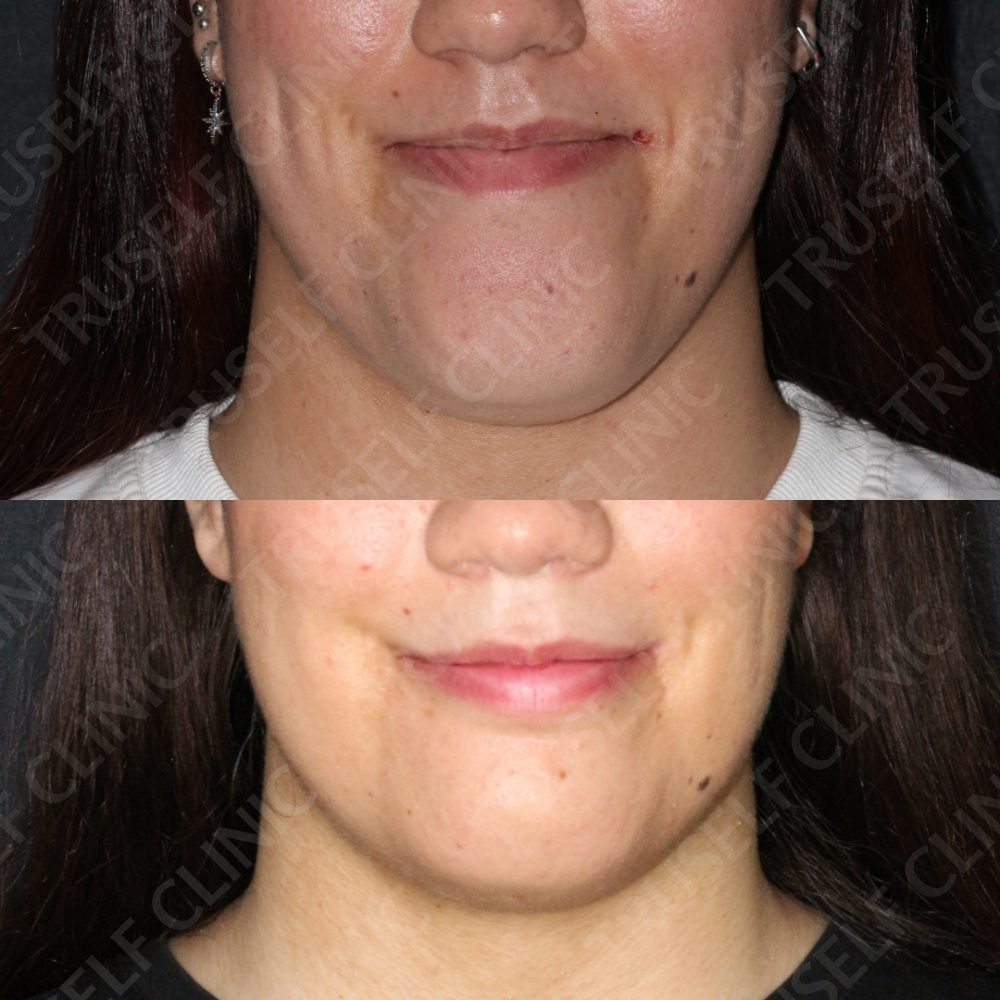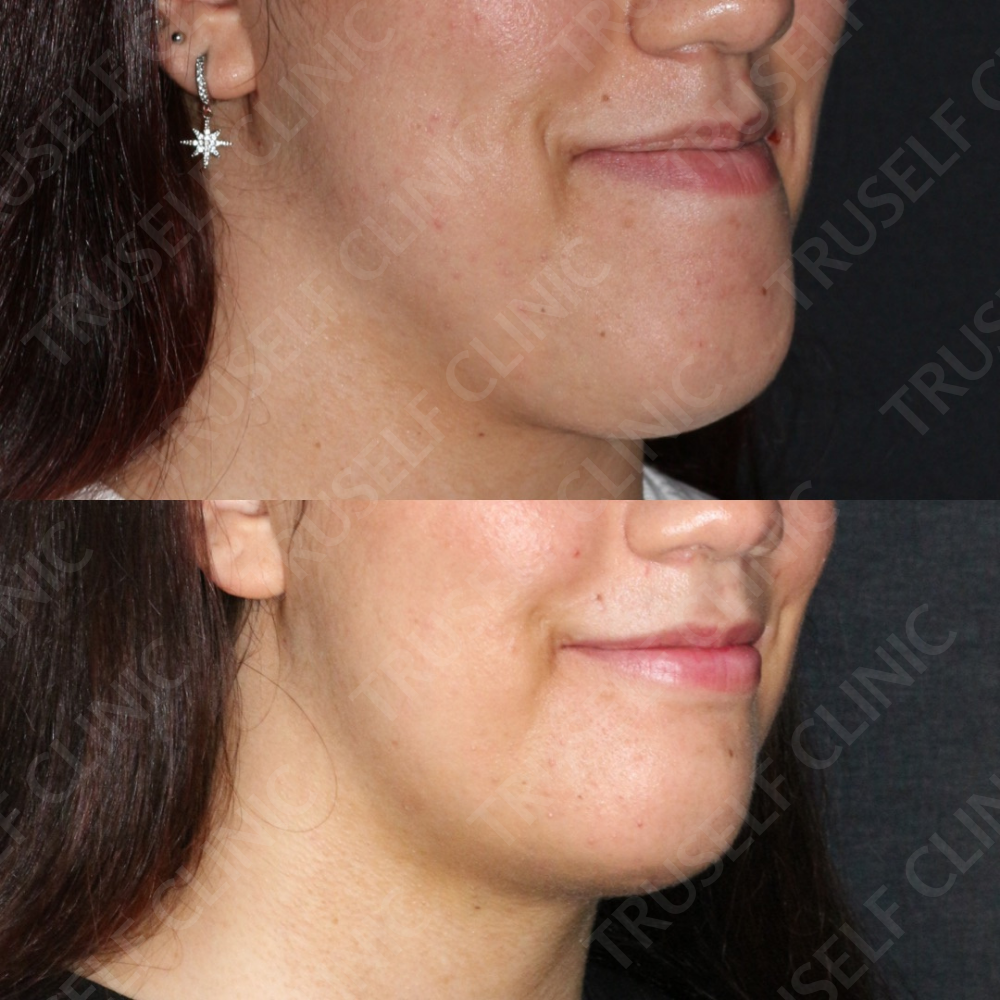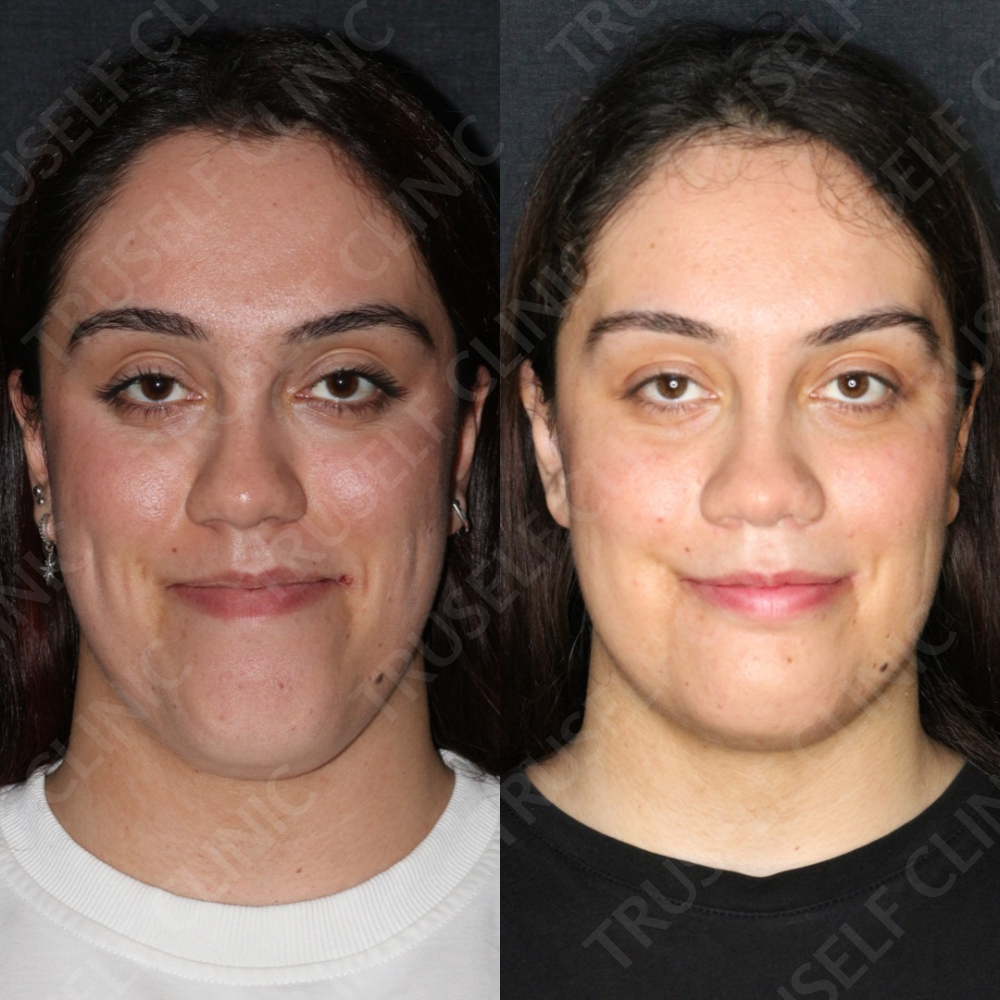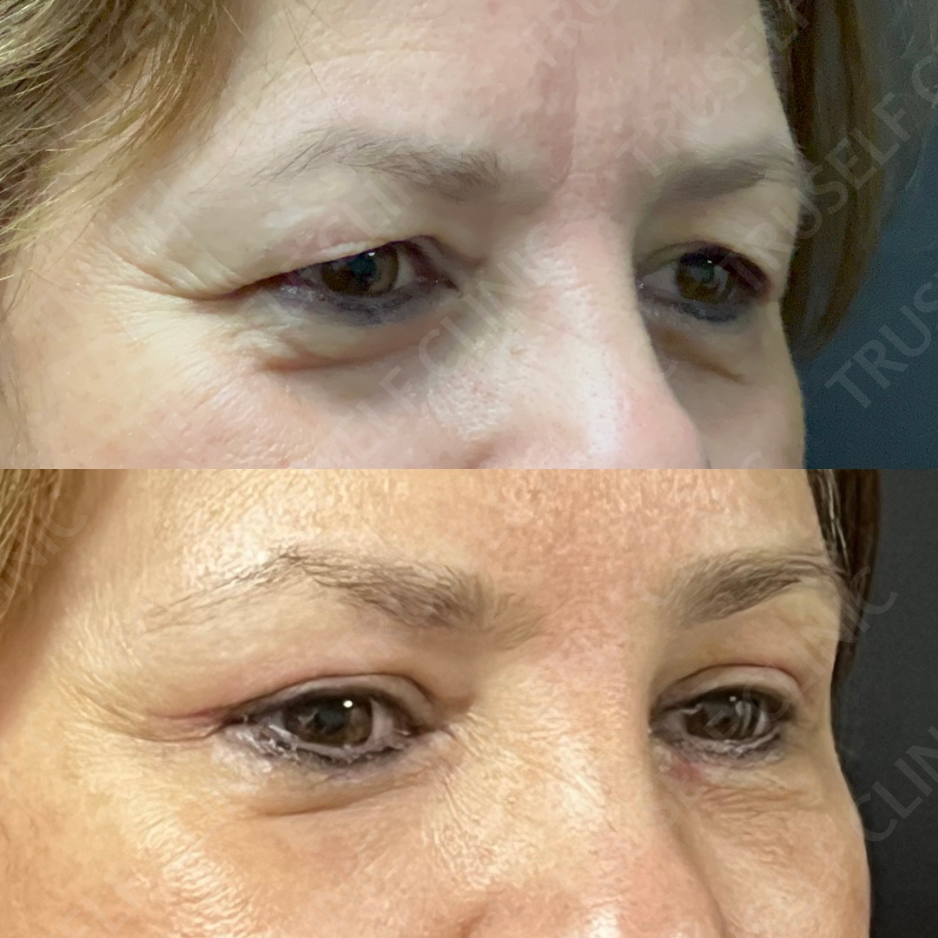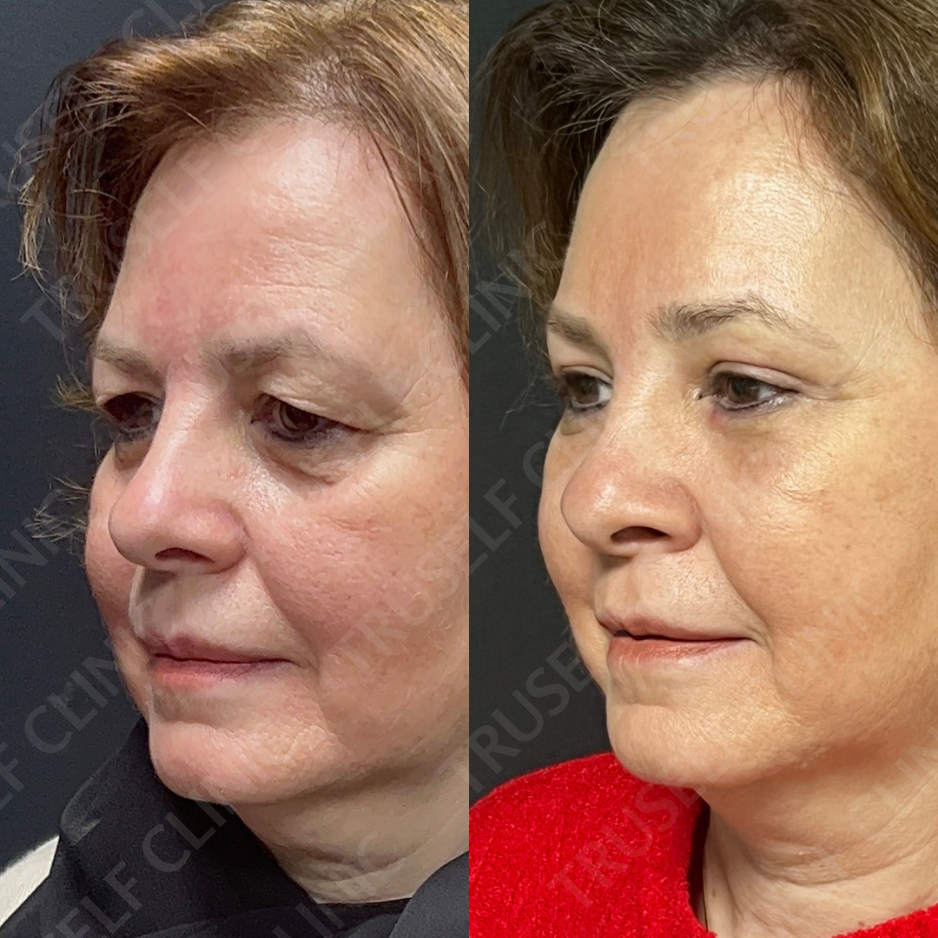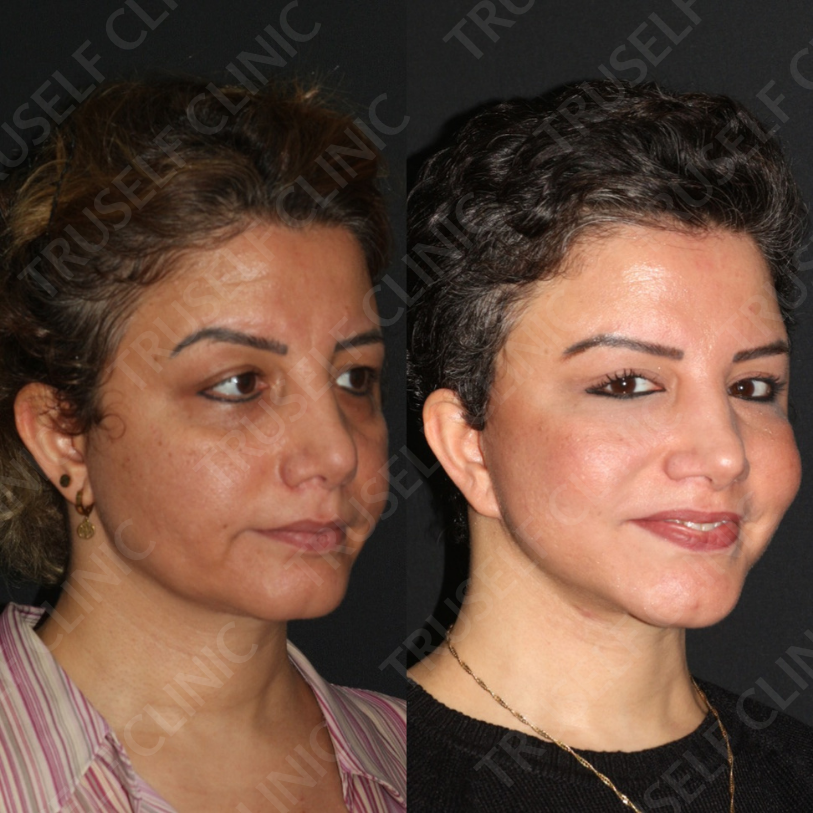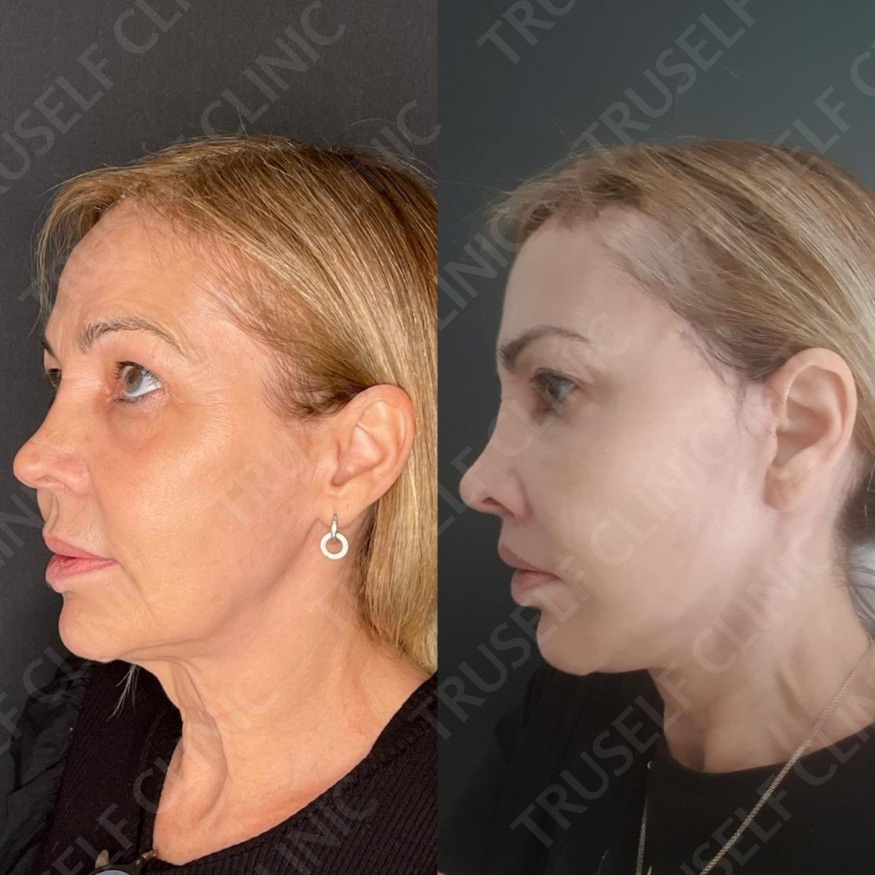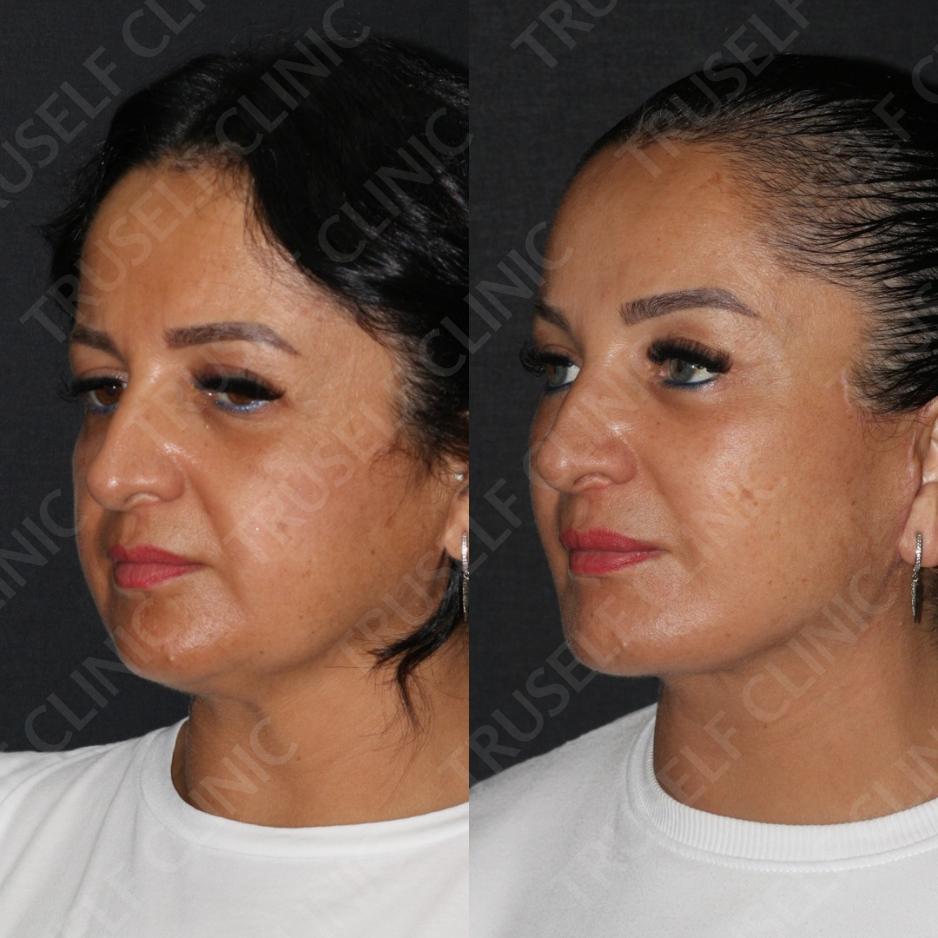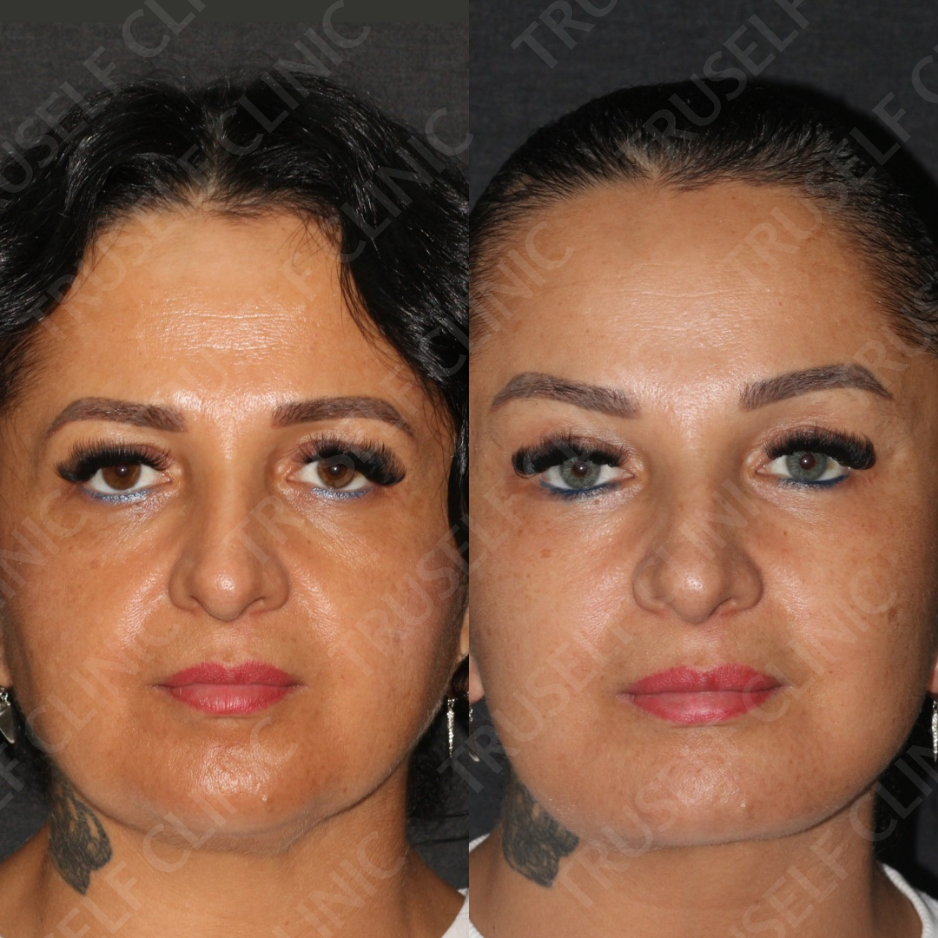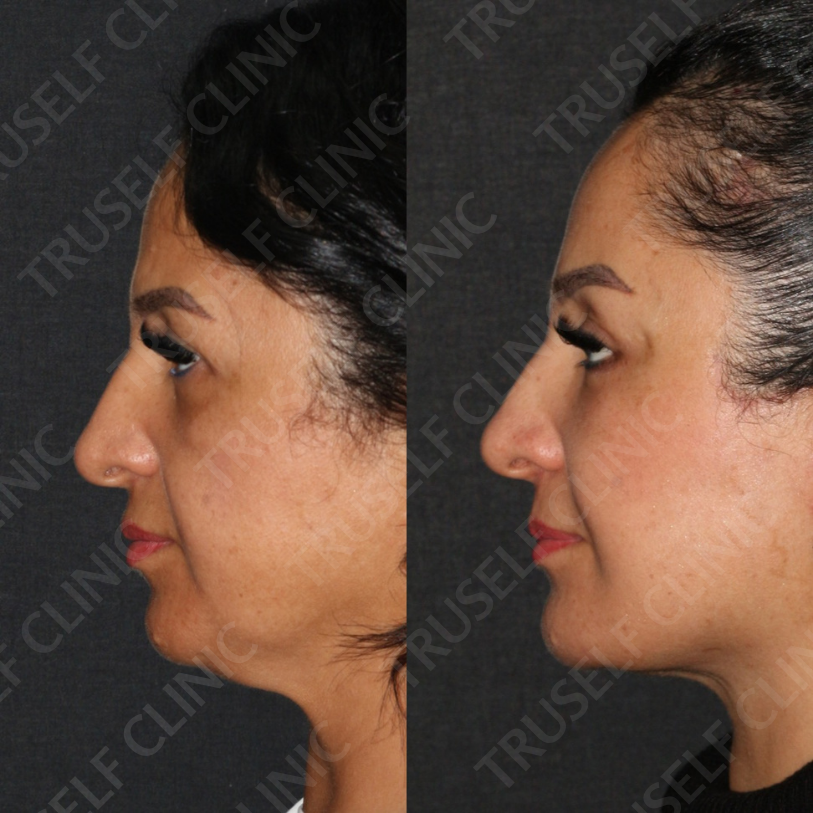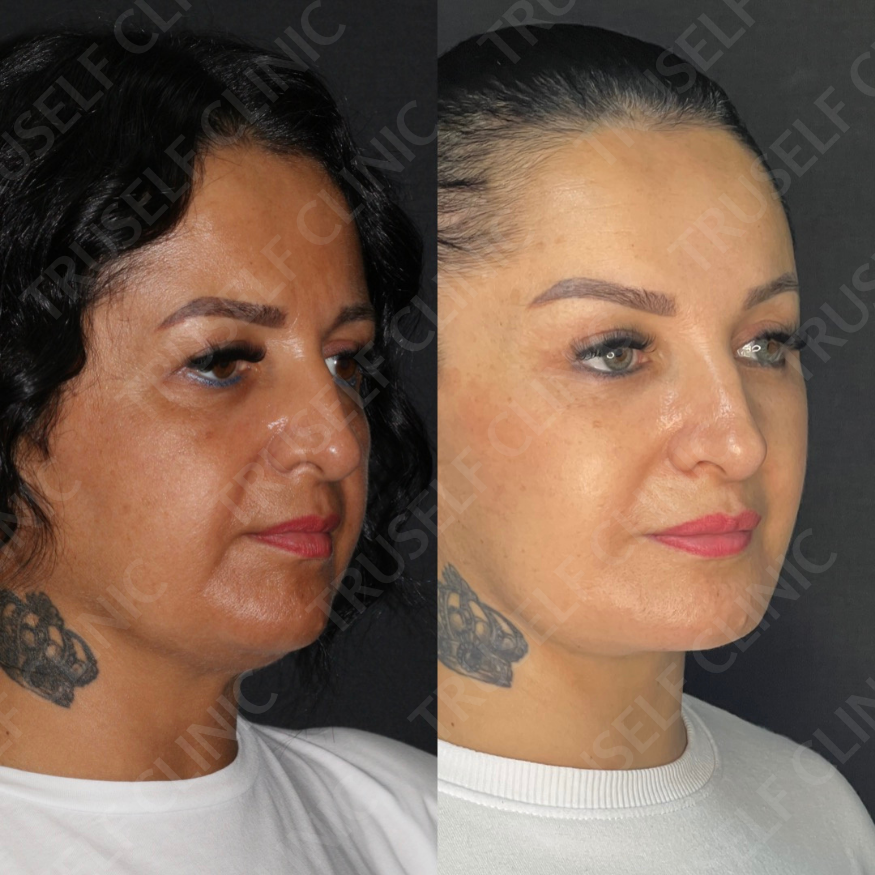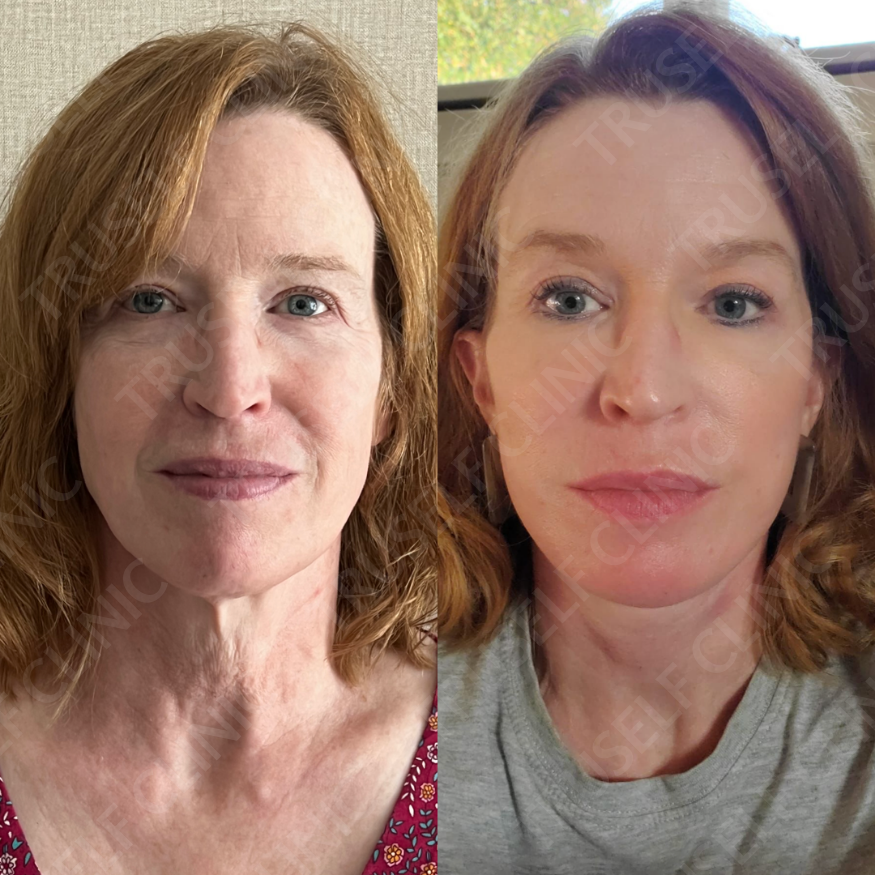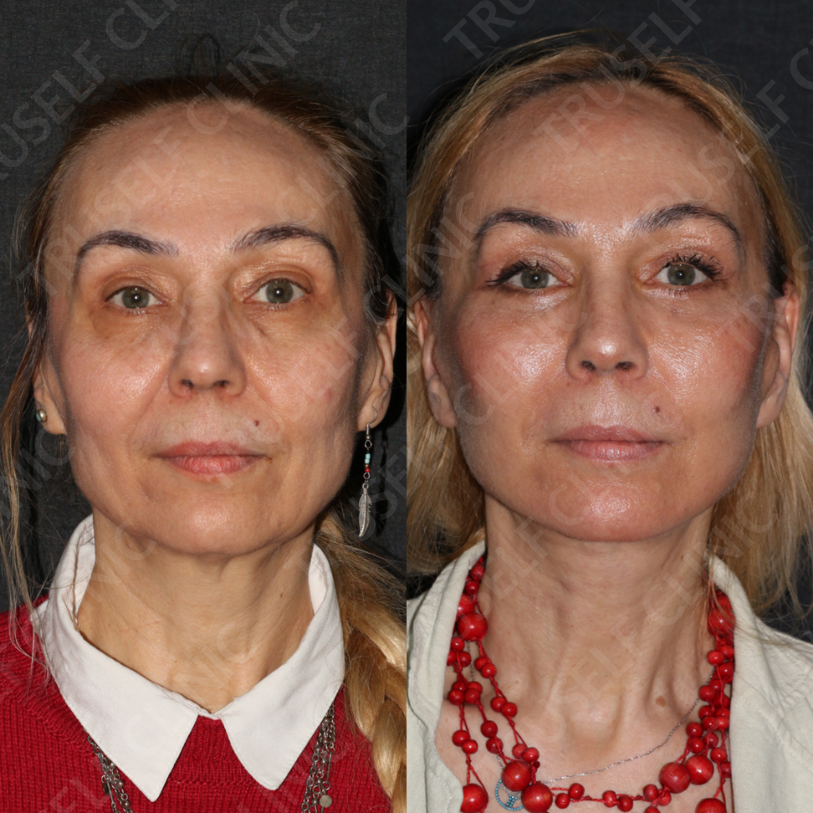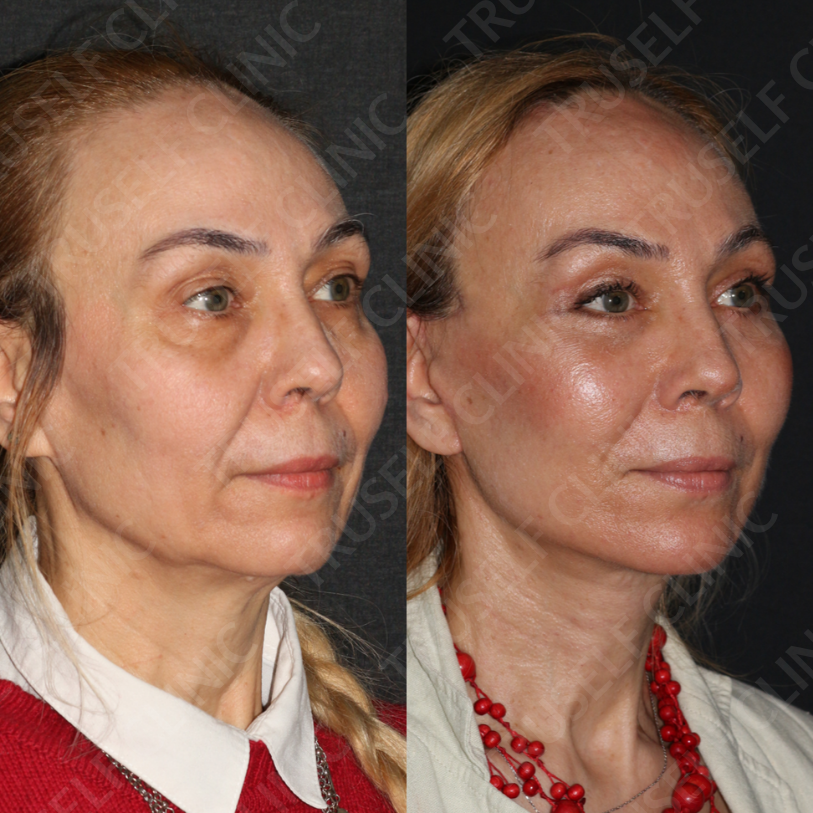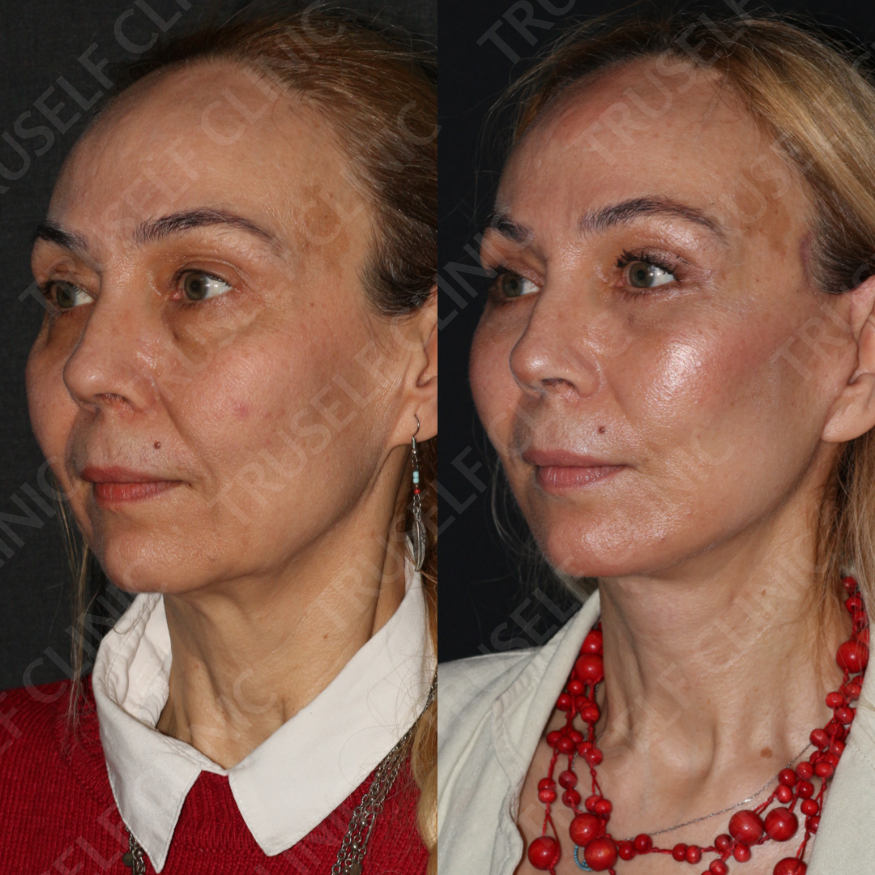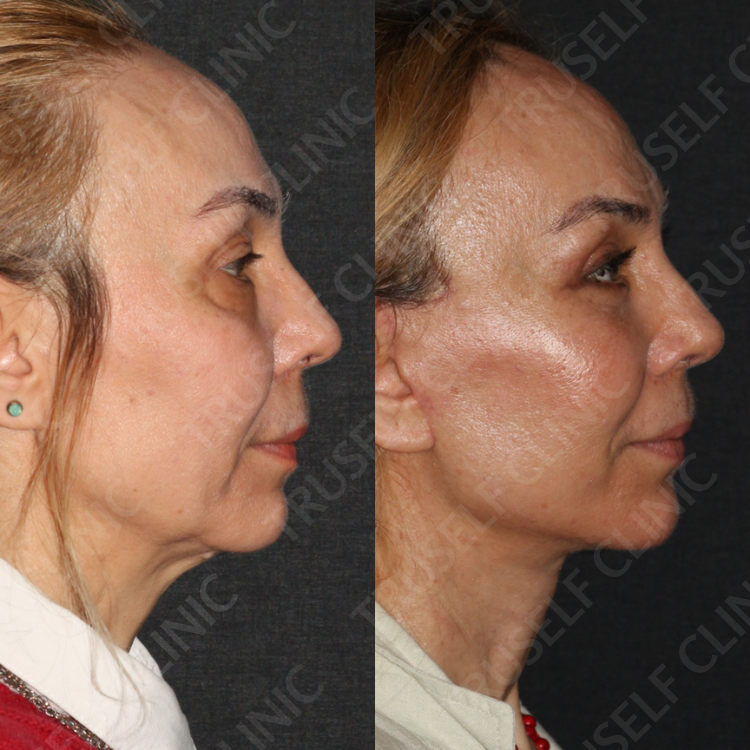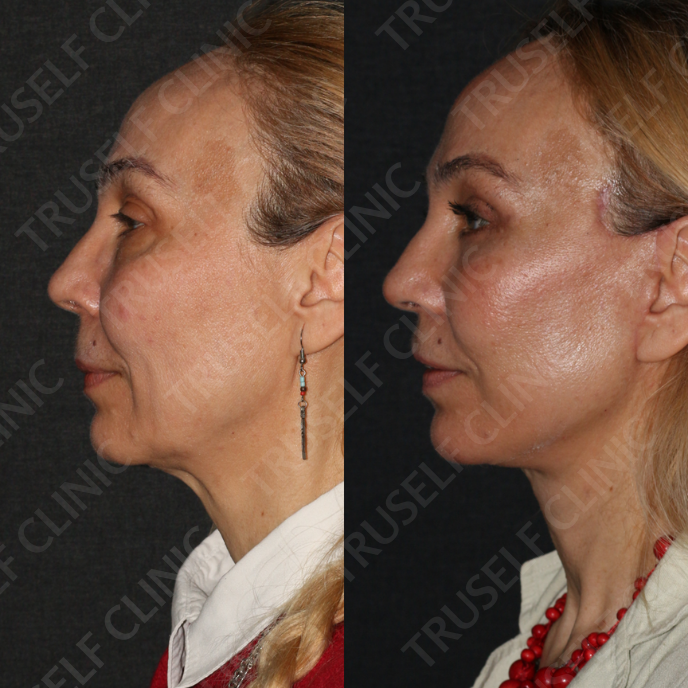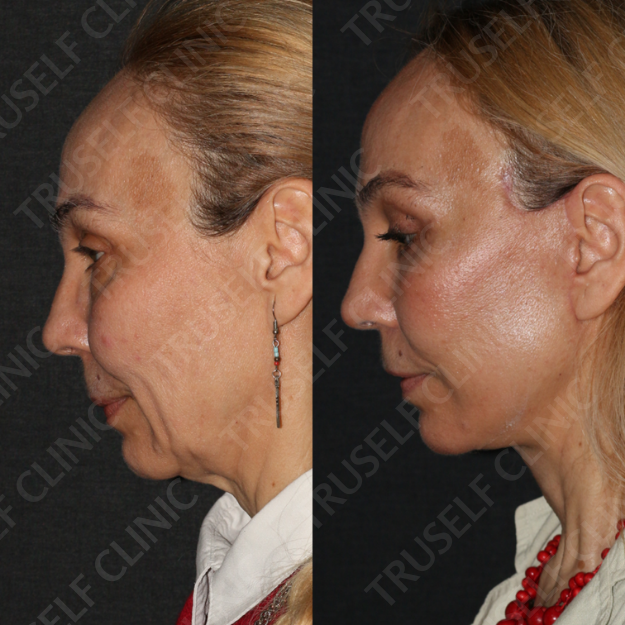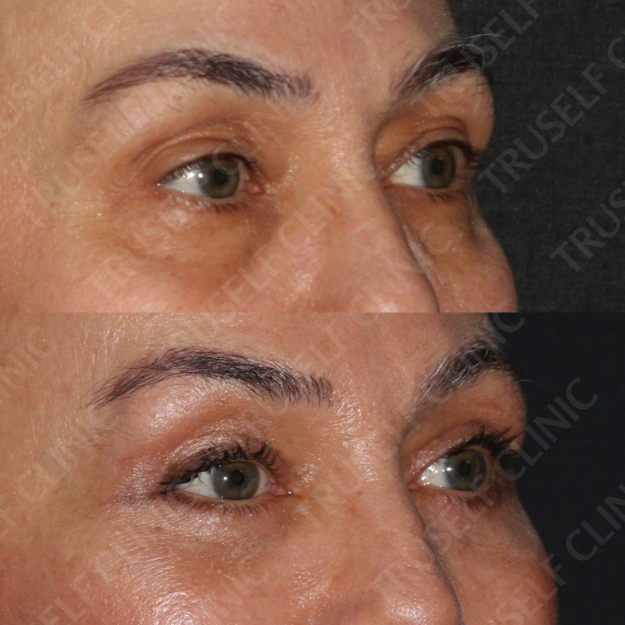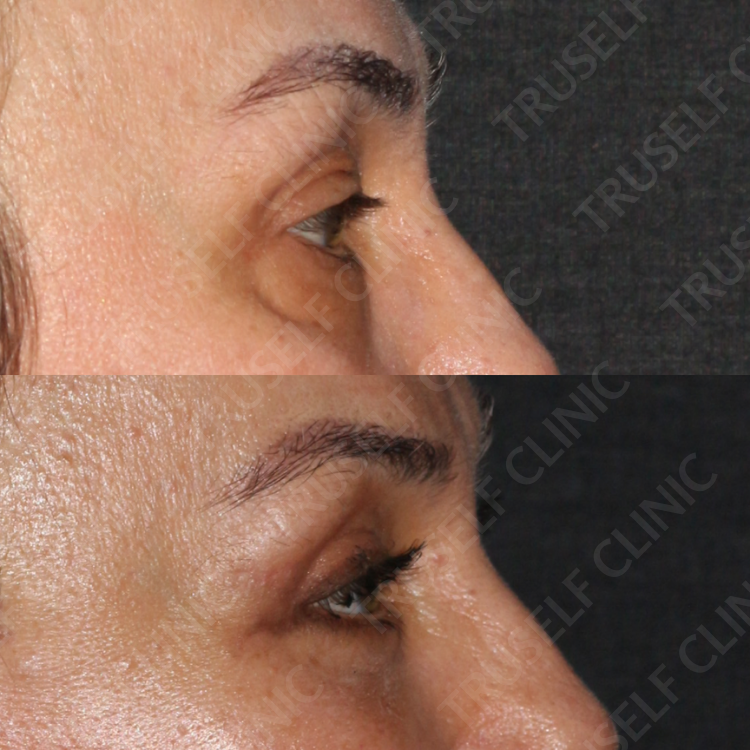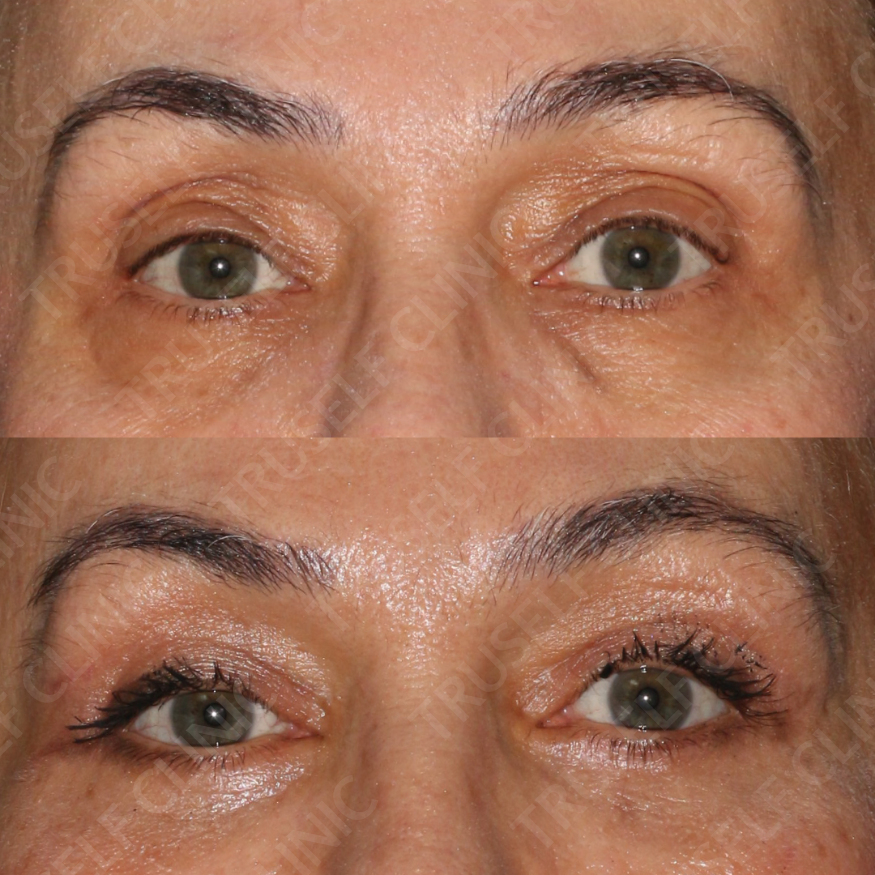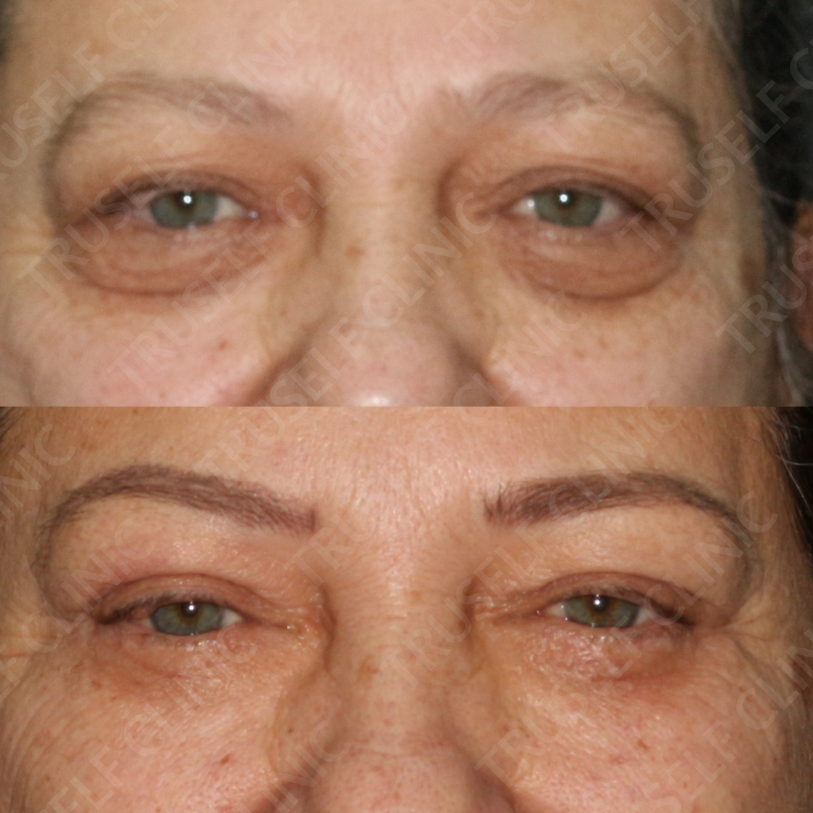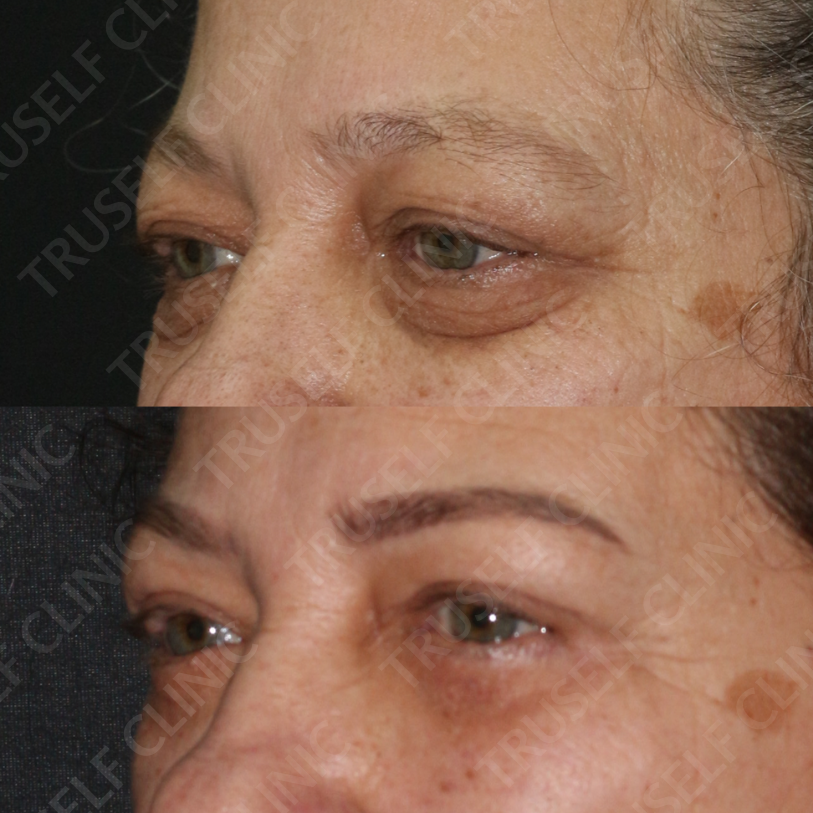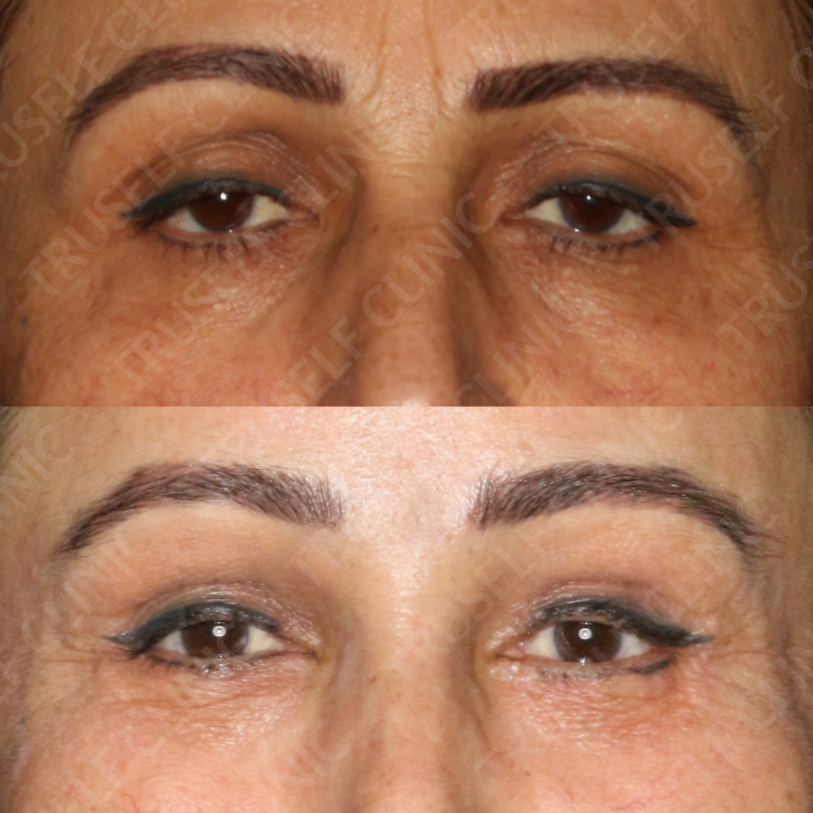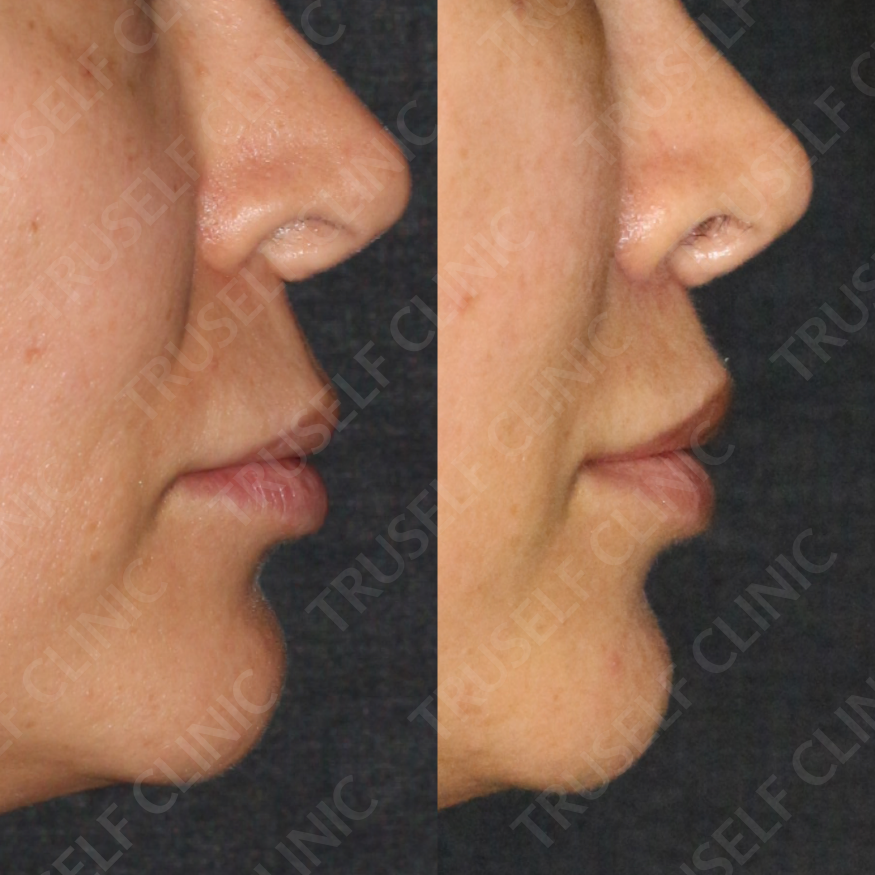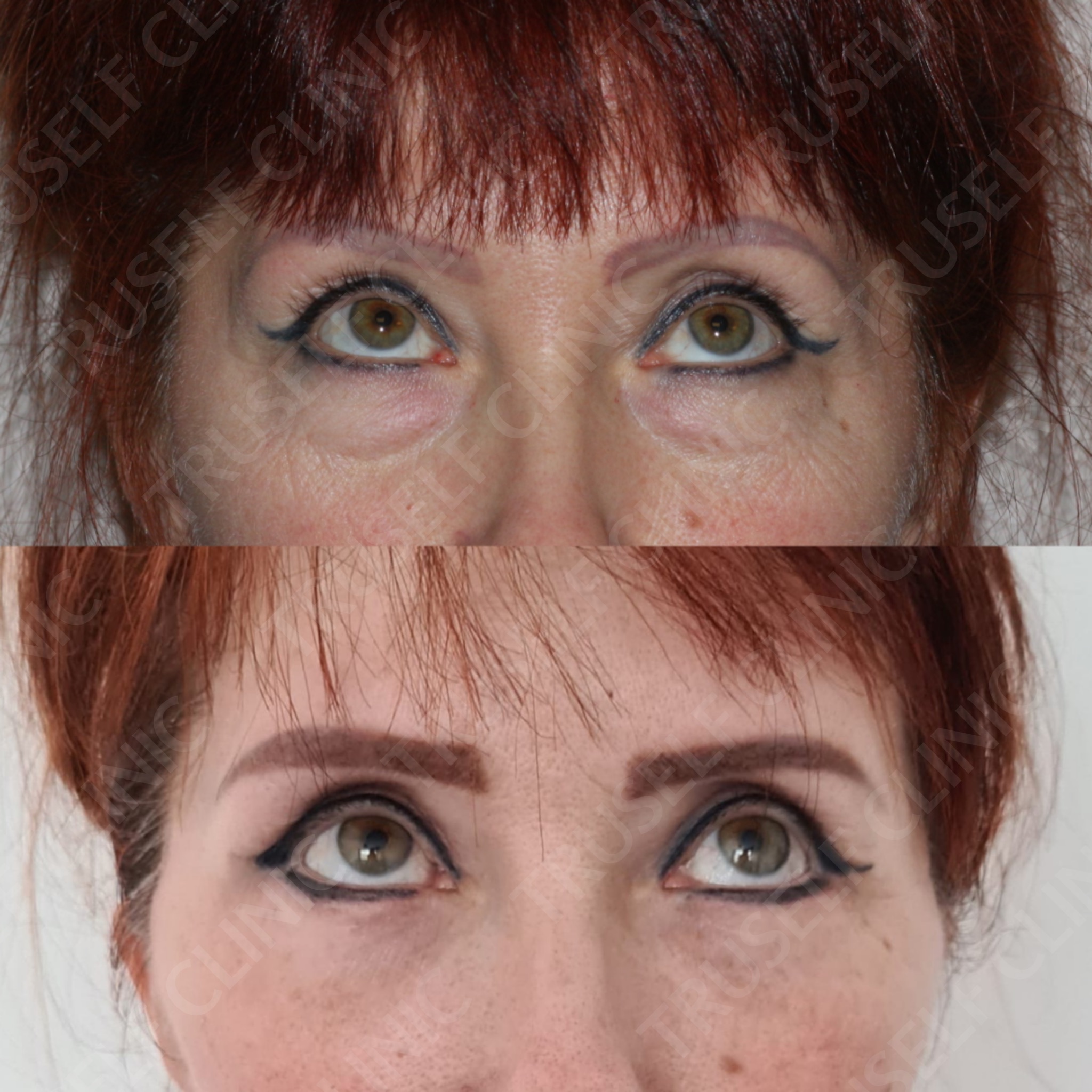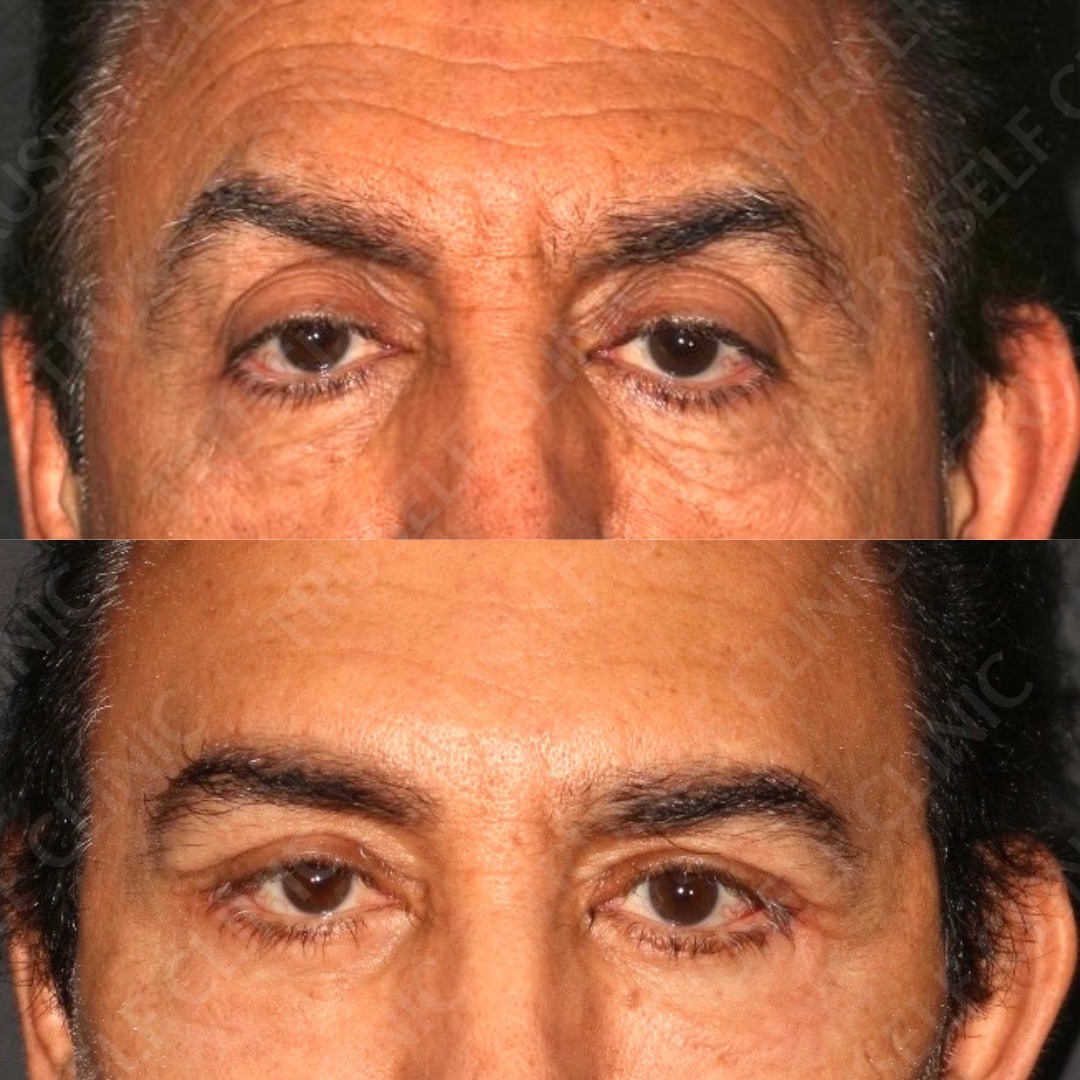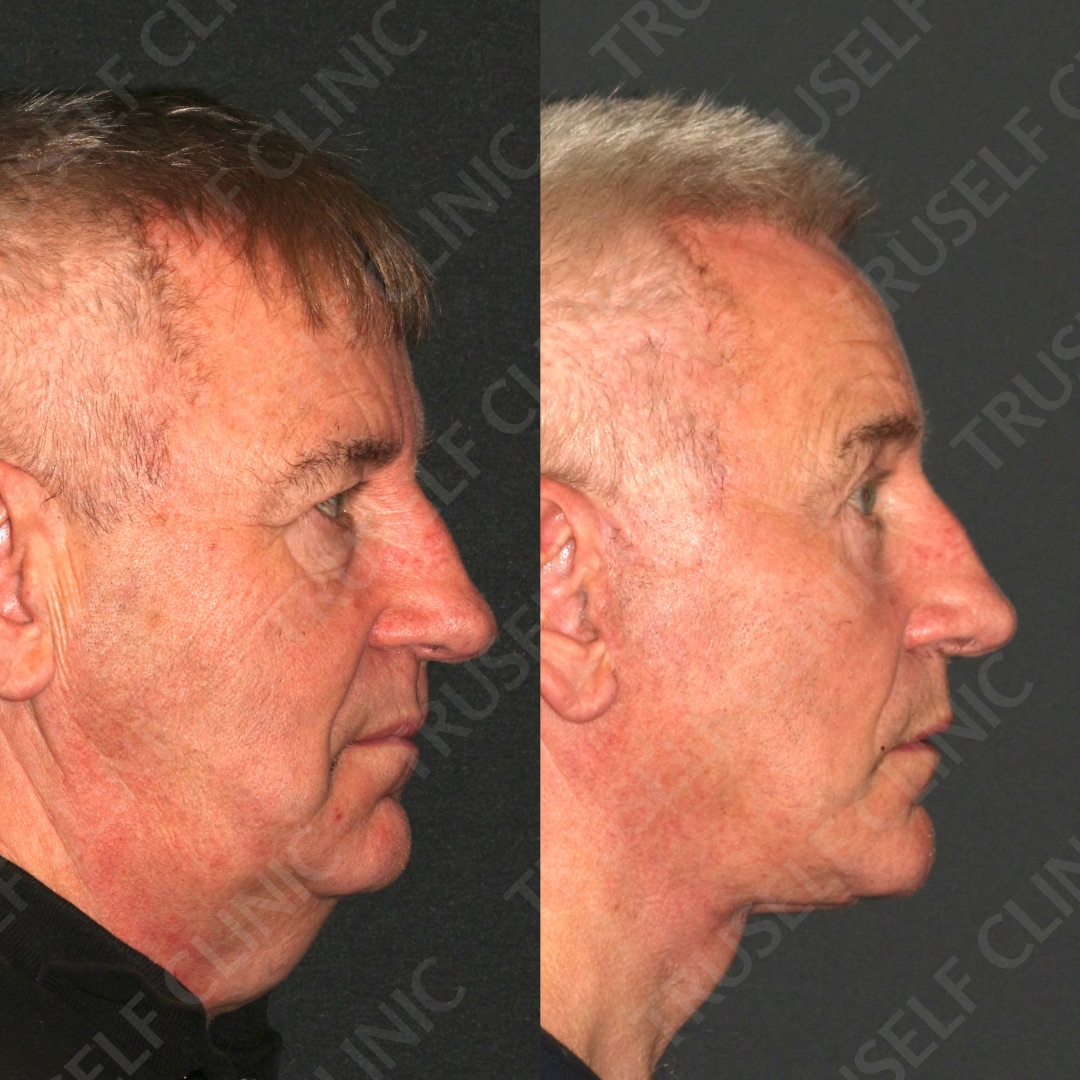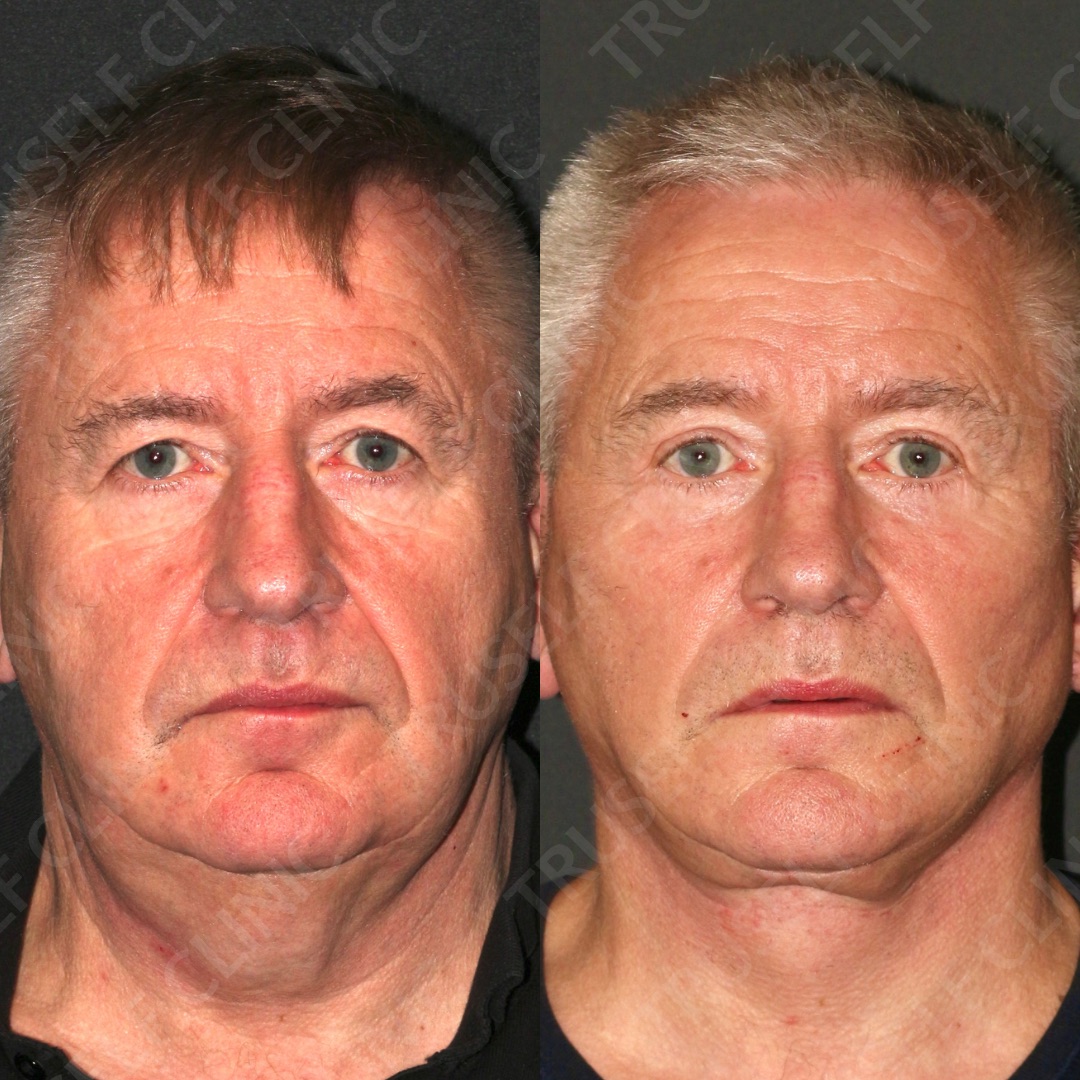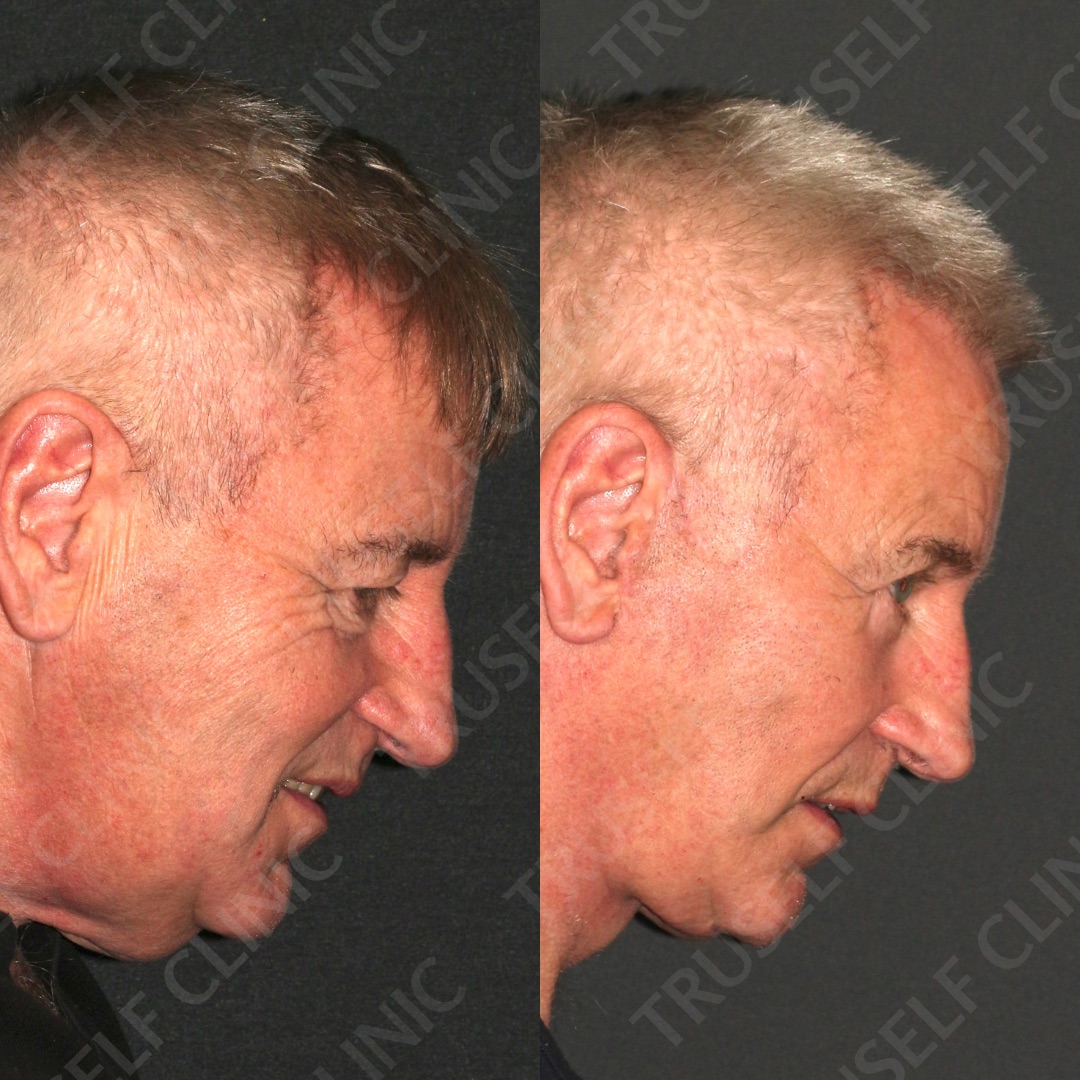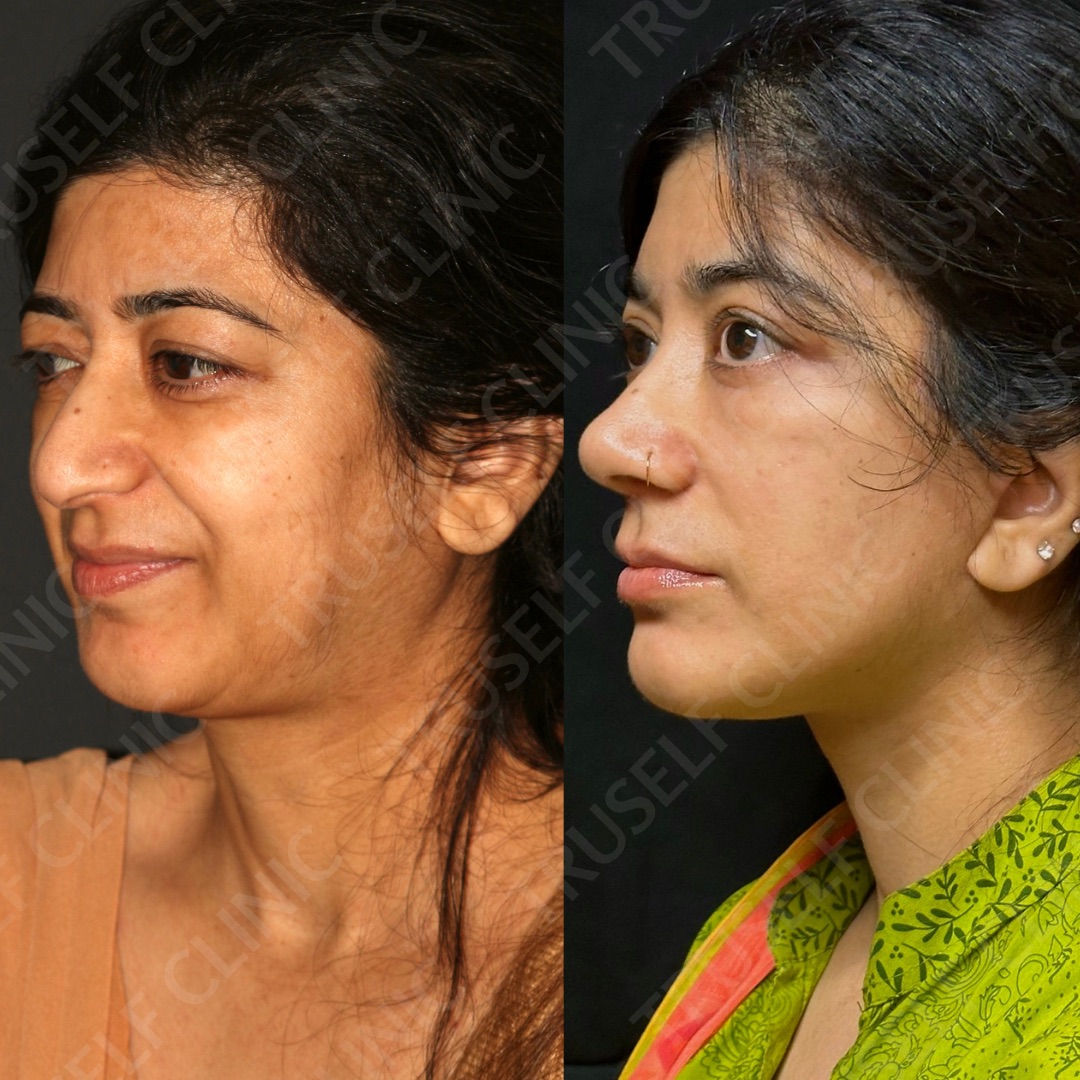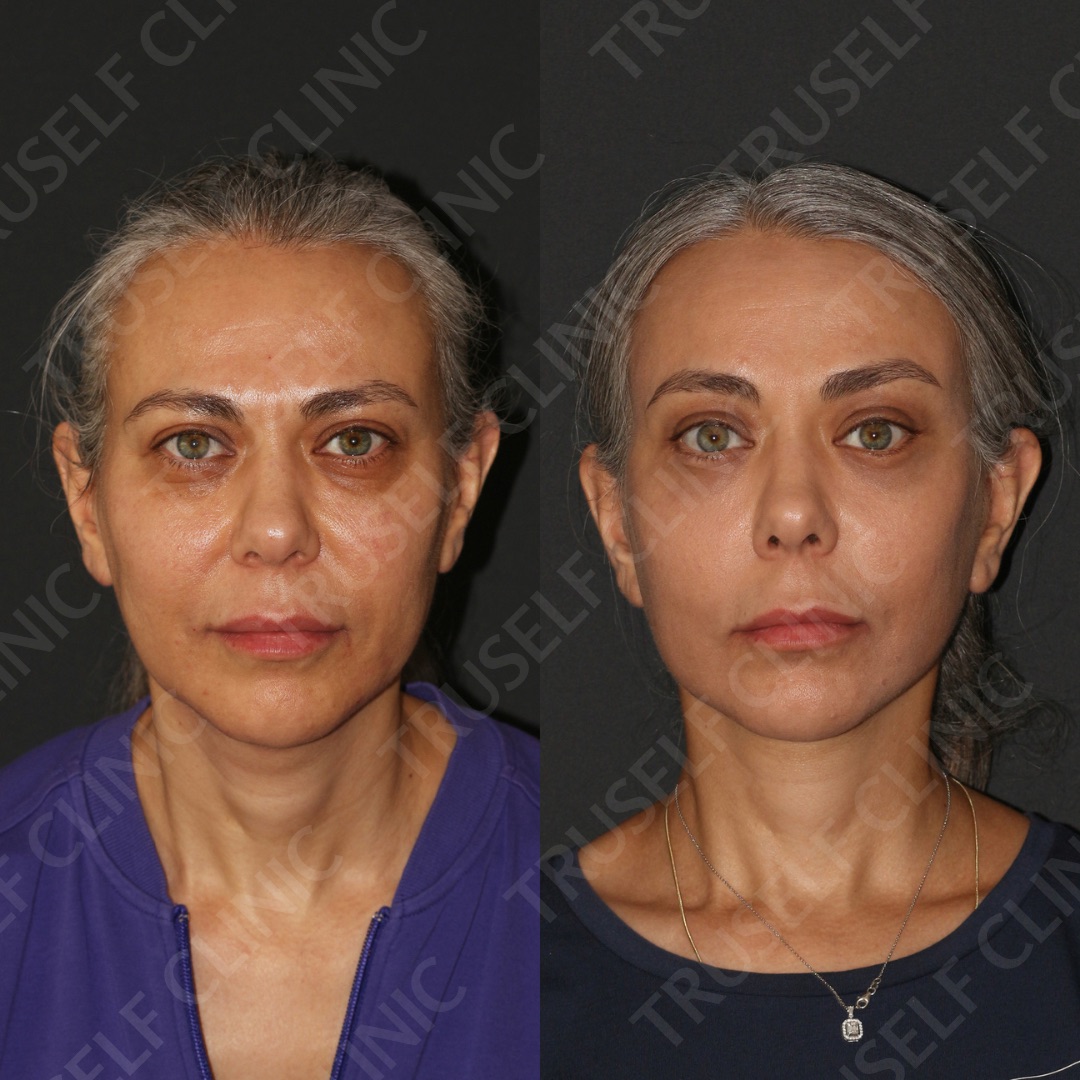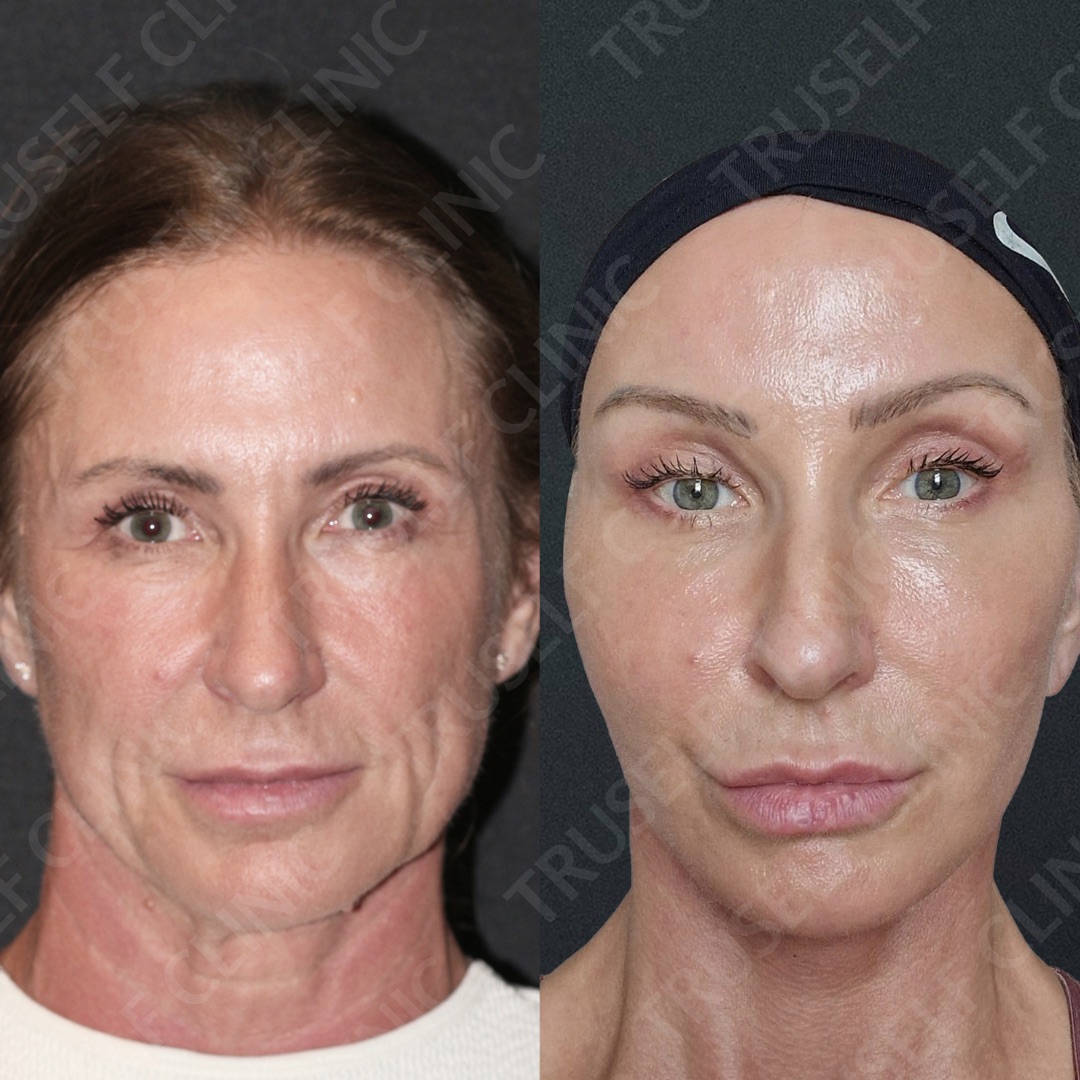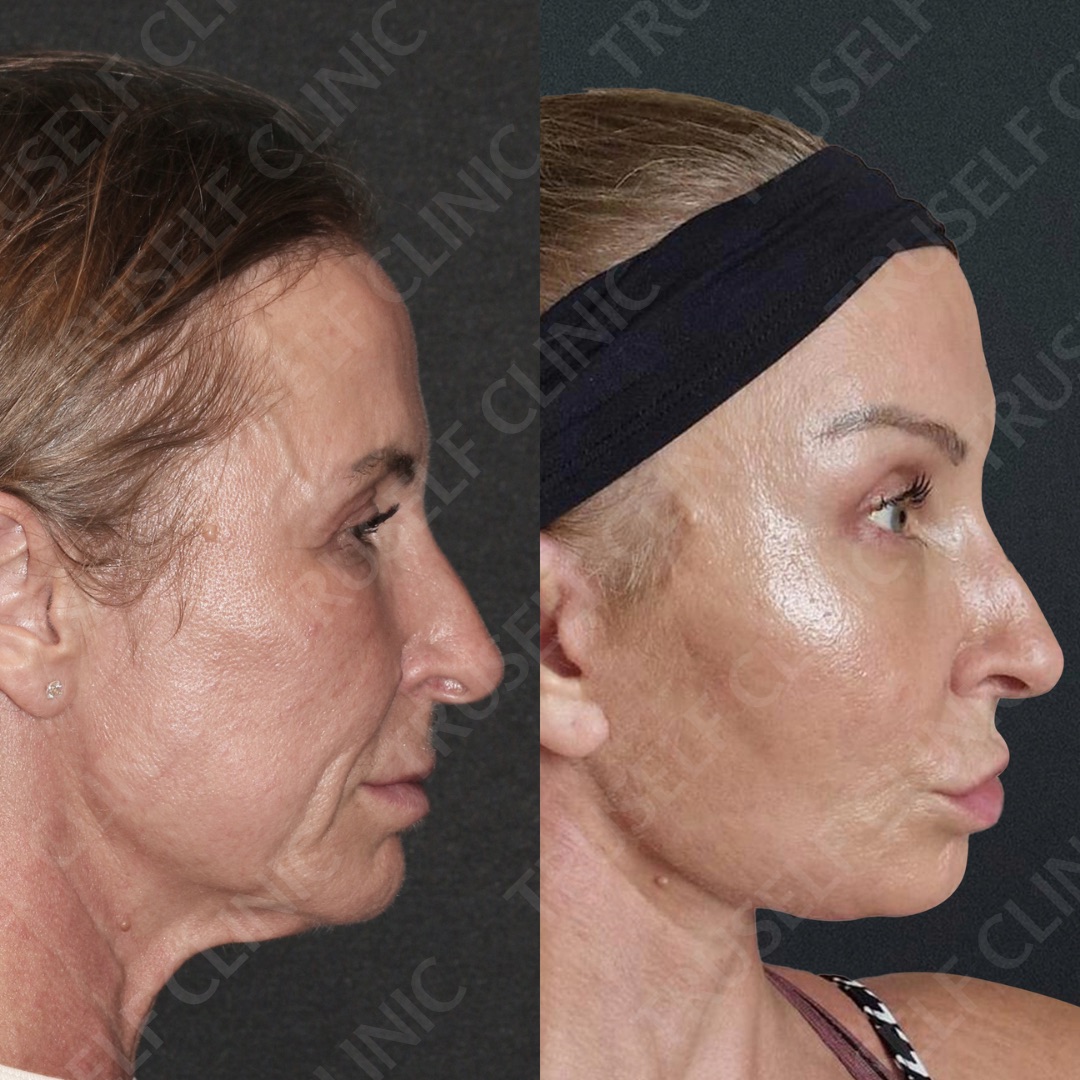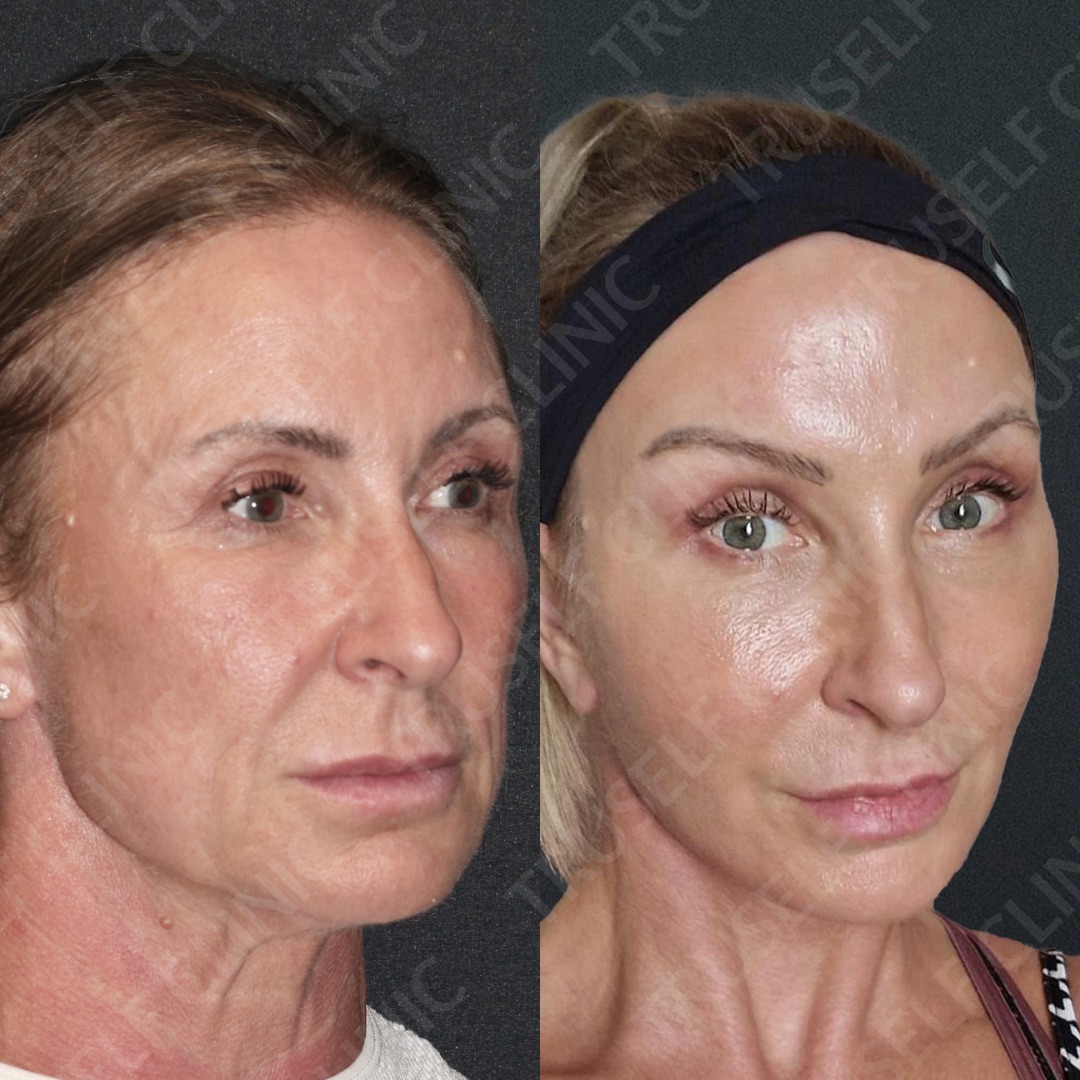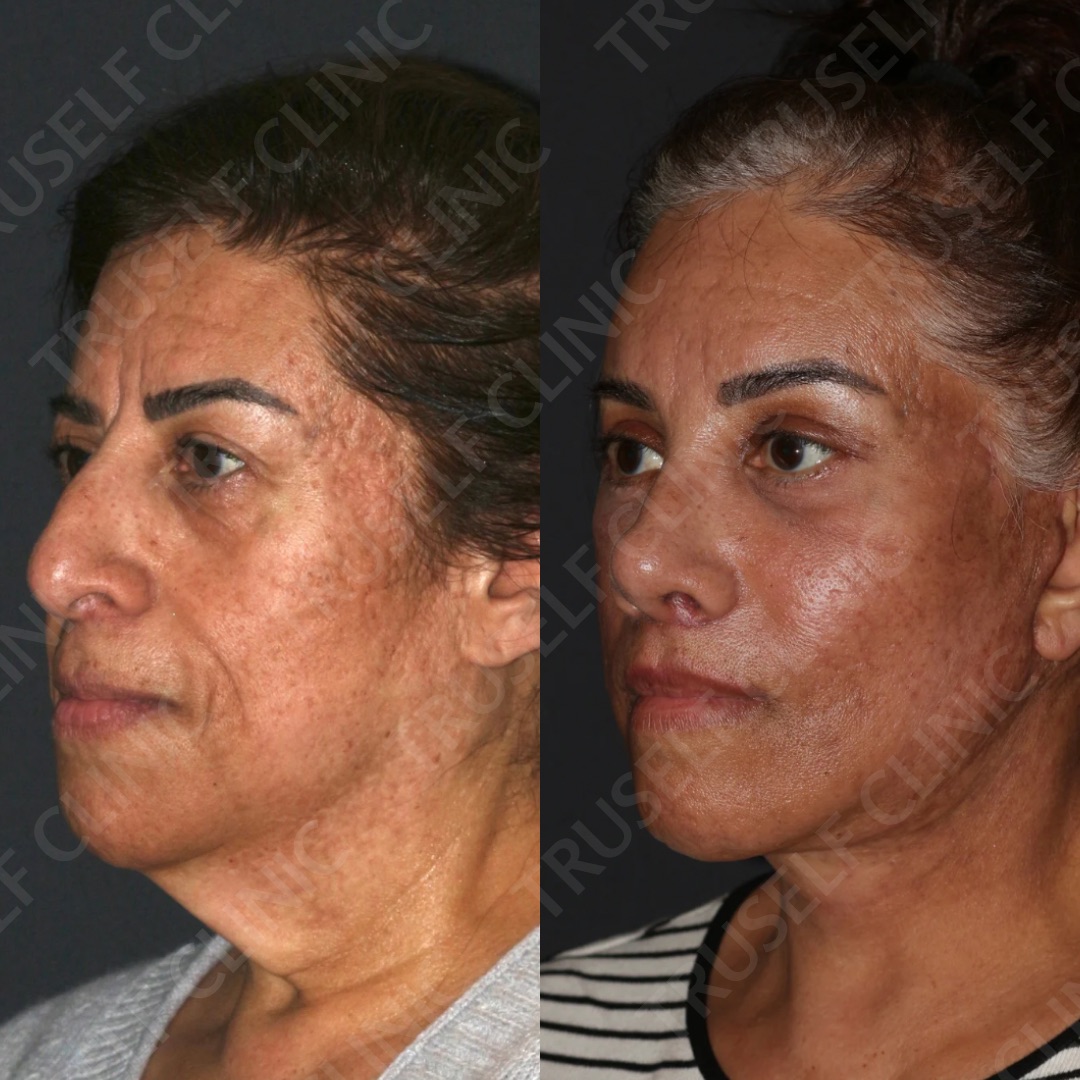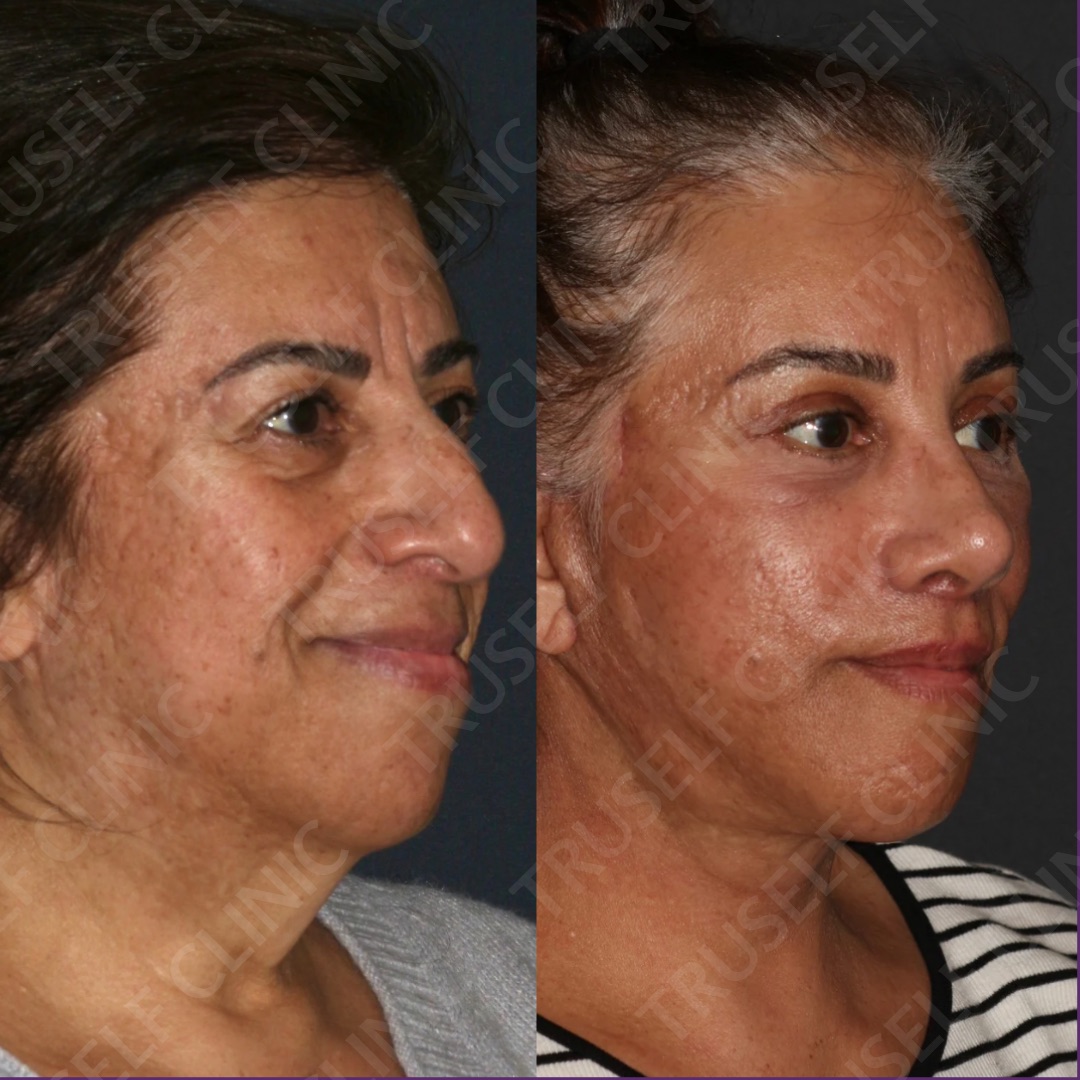Facelift
A facelift is a surgical procedure that aims to improve the visible signs of aging in the face and neck. This includes sagging skin, deep creases around the nose and mouth, jowls, and a double chin.
During a facelift, the surgeon makes incisions in the hairline and around the ears, then lifts and repositions the skin and underlying tissues to create a smoother, more youthful facial contour. Excess skin and fat may also be removed, and the muscles and tissues may be tightened to create a more defined jawline and neckline.
There are several types of facelift procedures, including:
- SMAS Plication: This type of facelift involves lifting and tightening the SMAS (superficial musculoaponeurotic system), which is a thin layer of muscle and connective tissue that lies beneath the skin. The SMAS facelift is known for its natural-looking results and long-lasting effects.
- Deep Plane Facelift: This type of facelift goes a step further than the SMAS facelift, by lifting and repositioning the deeper layers of tissue in the face. This technique is used to provide a more dramatic improvement in the appearance of the face. Deep plane facelift can provide long-lasting results and are often recommended for patients with more significant signs of aging, such as deep wrinkles, jowls, and sagging skin.
In a Deep Plane Facelift, incisions are made along the hairline and around the ear to access the deeper layers of tissue. Then the SMAS layer is lifted and repositioned, which in turn lifts the skin and other tissue above it. This allows for a more natural-looking result, as the lift occurs at a deeper level and avoids the "pulled" appearance that can sometimes occur with other facelift techniques.
This approach offers several advantages over traditional facelift techniques, including:
Natural-looking results: By repositioning the deeper layers of tissue, the deep plane facelift can provide more natural-looking results compared to traditional facelifts that primarily focus on tightening the skin.
Longer-lasting results: Since the deep plane facelift lifts and repositions the deeper layers of tissue, it can provide longer-lasting results compared to other facelift techniques.
Improved contouring: By lifting and repositioning the deeper layers of tissue, the deep plane facelift can also improve facial contours, resulting in a more youthful and attractive appearance.
However, it is important to note that not everyone is a candidate for a deep plane facelift. It is a more complex procedure and requires specialized training and expertise on the part of the surgeon.
- Mini Facelift: This is a less invasive facelift that focuses on lifting and tightening the skin in the lower face and neck. It is often recommended for patients who have early signs of aging and do not require a more extensive procedure.
- Mid-face Lift: This type of facelift focuses on lifting and tightening the skin and tissue in the mid-face area, between the lower eyelids and the mouth. It is often recommended for patients who have sagging cheeks and under-eye bags.
- Lower-face Lift: A lower facelift is a cosmetic surgery procedure that is designed to address sagging skin and jowls on the lower third of the face, including the neck and chin area. This procedure can help to restore a more youthful appearance by tightening and lifting the skin and muscles of the lower face.
Some patients may choose to combine a lower facelift with other procedures, such as a neck lift or a brow lift, for a more comprehensive rejuvenation of the face. Recovery time for a lower facelift varies, but most patients can expect some swelling and bruising for several days after the procedure.
The specific type of facelift that is recommended will depend on a variety of factors, including the patient's age, skin quality, and specific concerns. This is where you book online consultation. (insert the link)
Who is a good candidate for a facelift?
A good candidate for facelift surgery is someone who is in good overall health and has realistic expectations about the results of the procedure. Ideal candidates for facelift surgery are typically individuals who are experiencing visible signs of aging in the face and neck, such as sagging skin, deep creases, jowls, and a double chin.
Other factors that can make someone a good candidate for facelift surgery include:
- Good skin elasticity: Facelift surgery is most effective for patients with good skin elasticity, as this helps to ensure that the skin will conform to the new contours of the face and neck after surgery.
- Non-smoker: Smoking can impair the body's ability to heal after surgery and can increase the risk of complications. Patients who smoke are typically advised to quit several weeks before and after surgery.
- Stable weight: Patients should be at a stable weight before undergoing facelift surgery, as significant weight fluctuations can affect the results of the procedure.
- Realistic expectations: Patients should have realistic expectations about the results of facelift surgery and understand that while the procedure can help to rejuvenate the face and neck, it cannot completely stop the aging process.
- Good mental health: Patients should be in good mental health and have a positive outlook on life before undergoing facelift surgery. (?)
It is important to consult with a qualified plastic surgeon to determine if you are a good candidate for facelift surgery and to discuss the risks and benefits of the procedure.
What are the risks of facelift?
As with any surgical procedure, facelift surgery carries some risks and potential complications. While complications are relatively uncommon, it is important for patients to be aware of the potential risks before undergoing the procedure. Some of the risks associated with facelift surgery include:
- Bleeding: While rare, excessive bleeding can occur during or after the procedure.
- Infection: Any surgical procedure carries a risk of infection, although this is relatively uncommon with facelift surgery.
- Nerve damage: There is a small risk of nerve damage during the procedure, which can cause numbness, tingling, or weakness in the face. In most of the cases, with proper exercises it can be healed.
- Scarring: While the incisions made during facelift surgery are typically well-hidden, there is still a risk of visible scarring.
- Poor wound healing: Some patients may experience delayed wound healing or wound separation after surgery, which can increase the risk of infection and scarring.
- Anesthesia complications: Facelift surgery is typically performed under general anesthesia, which carries a small risk of complications such as allergic reactions, breathing problems, or heart complications.
- Unsatisfactory results: While facelift surgery can help to improve the appearance of the face and neck, there is always a risk of unsatisfactory results.
It is important for patients to discuss the potential risks and benefits of facelift surgery with a qualified plastic surgeon before undergoing the procedure. Following the surgeon's post-operative instructions carefully can help to minimize the risk of complications and promote a smooth recovery.
How to get ready for the surgery?
Preparing for facelift surgery involves several steps to ensure the best possible outcome and a smooth recovery. Here are some general guidelines on how to get ready for the surgery:
- Consult with a qualified plastic surgeon: Before undergoing facelift surgery, it is important to consult with our qualified plastic surgeon to discuss your goals and expectations for the procedure, as well as any medical conditions or medications that may affect the surgery or the recovery process.
- Follow the pre-operative instructions: Your surgeon will provide you with specific pre-operative instructions to follow in the days and weeks leading up to the surgery. This may include avoiding certain medications or supplements and stopping smoking.
- Prepare your home: Make sure your home is clean and organized before the surgery, and stock up on any supplies you may need after you get back, such as pain medication, ice packs, and soft foods.
- Take care of yourself: In the weeks leading up to the surgery, it is important to take care of yourself by eating a healthy diet, getting plenty of rest, and avoiding alcohol and drugs.
- Stay informed: Make sure you understand the risks and benefits of the surgery, as well as the recovery process and any potential complications. Ask your surgeon any questions you may have before the surgery to help ease any anxieties or concerns.
By following these steps and working closely with your plastic surgeon, you can help ensure the best possible outcome and a smooth recovery after facelift surgery.
How to take care of yourself after a facelift surgery?
After a facelift, it's important to take good care of your face to ensure proper healing and minimize the risk of complications. Here are some general guidelines on how to take care of yourself after a facelift:
- Rest and avoid strenuous activity for the first few weeks after surgery. Avoid bending over or lifting heavy objects, as this can increase blood pressure and cause bleeding.
- Keep your head elevated when sleeping to help reduce swelling. You may want to use extra pillows or a wedge pillow to keep your head elevated.
- Apply ice packs to the treated areas for the first few days after surgery to help reduce swelling and bruising. Your surgeon may recommend using a specific type of ice pack.
- Keep your incisions clean and dry. Your surgeon will give you specific instructions on how to clean your incisions and when it's safe to shower or wash your hair.
- Avoid exposing your incisions to direct sunlight for several months after surgery to prevent scarring. Wear a hat or use a sunscreen with a high SPF to protect your skin.
- Avoid smoking and alcohol as these can delay the healing process and increase the risk of complications.
- Attend follow-up appointments with your surgeon to monitor your healing progress and ensure that there are no complications.
- Follow a healthy diet and drink plenty of water to promote healing.
- Be patient during the healing process and avoid rushing back into your normal routine too quickly. Your surgeon will advise you on when it's safe to resume normal activities.
If you have any concerns or questions during the healing process, be sure to contact your surgeon for guidance. Following these guidelines can help ensure the best possible outcome and a successful recovery.
How is the healing process after facelift?
The healing process after a facelift can vary depending on the individual and the extent of the surgery. Here is a general timeline of what to expect during the healing process:
First week: The first week after surgery is typically the most uncomfortable. You may experience pain, swelling, bruising, and discomfort around the incision areas. Your surgeon will provide you with medication to manage these symptoms.
First two weeks: The swelling and bruising should begin to subside during the second week. You may still need to wear bandages or a compression garment to help reduce swelling.
First month: The majority of the swelling should have gone down by the end of the first month, though some minor swelling may persist for several months.
First three months: The healing process can take up to three months or longer, during which time you may experience occasional bouts of swelling or sensitivity around the incision areas.
- It's important to follow your surgeon's post-operative care instructions to ensure proper healing and minimize the risk of complications. Here are some general guidelines on how to take care of yourself after a facelift:
- Rest and avoid strenuous activity for the first few weeks after surgery.
- Avoid excessive facial expressions, chewing or speaking too much for the first week or two after surgery.
- Keep your head elevated when sleeping to help reduce swelling.
- Avoid smoking and alcohol as these can delay the healing process.
- Attend follow-up appointments with your surgeon to monitor your healing progress and ensure that there are no complications.
- Avoid exposing your incision areas to direct sunlight for several months after surgery to prevent scarring.
- It's important to be patient during the healing process and to follow your surgeon's instructions closely to ensure the best possible outcome. If you have any concerns or questions during the healing process, be sure to contact your surgeon for guidance.
How is the scarring after facelift?
The scarring after a facelift varies depending on the technique used and the individual's healing ability. However, most surgeons use techniques that minimize scarring and make the scars less visible.
The most common incision locations for a facelift are in front of and behind the ear, and sometimes under the chin. The incisions are made in natural skin creases or in areas that can be easily hidden by the hair or clothing. In general, the incisions are designed to be hidden as much as possible.
After the surgery, your surgeon may recommend using silicone sheets or creams to help reduce the appearance of scarring. It's also important to follow your surgeon's post-operative instructions carefully, including keeping the surgical site clean and dry, avoiding strenuous activities, and wearing compression garments as directed.
In most cases, the scarring from a facelift will gradually fade over time and become less noticeable. However, it's important to remember that every patient is unique and the extent and appearance of scarring may vary. It's also possible for scars to be more visible in patients with certain skin types or those who experience complications during the healing process.
When can results be seen?
The results of a facelift surgery can typically be seen immediately after the procedure, although there may be some initial swelling and bruising. However, it may take several weeks or even months for the final results to fully manifest, as the swelling subsides and the skin settles into its new position.
How permanent are the results?
The longevity of the results of a facelift surgery can vary depending on a number of factors, including the patient's age, skin quality, lifestyle habits, and the specific techniques used during the procedure. In general, a facelift can provide significant improvement in the appearance of the face and neck, but it is not a permanent solution. Over time, the natural aging process will continue, and some degree of sagging and wrinkling may gradually reappear. However, the results of a facelift can be long-lasting, and many patients enjoy a more youthful and refreshed appearance for many years after the procedure. Your aging process will start again 10-15 years behind :)
Can facelift surgery be repeated?
Yes, facelift surgery can be repeated, although it is generally not recommended to undergo the procedure too frequently. In most cases, patients can expect the results of a facelift to last several years, although the exact duration will depend on a variety of factors including the patient's age, skin quality, and lifestyle habits.
If a patient wishes to undergo a second facelift (revision), it is important to wait until the results of the first surgery have fully settled and the face has fully healed. This may take several months or longer, depending on the individual. Additionally, the second surgery may be more complicated than the first, as the surgeon will need to work with scar tissue and address any residual issues from the first procedure. It is important to consult with a qualified plastic surgeon to discuss the potential risks and benefits of a second facelift, and to determine whether it is the best course of action for the patient's individual needs and goals.




